Recent developments on Asian Monsoon climate
2
1988
... 印度洋在全球气候演变中扮演着重要的角色,尤其在亚洲季风系统中起着关键的作用[1 ,2 ] .作为东亚季风水汽的重要源地,印度洋能够影响中国华南、西南的季风性降水,以及长江中下游的汛期,进而影响我国的旱涝灾害[3 ,4 ] .印度洋热带环流是全球风生环流的重要组成部分,其作为衔接北印度洋季风环流和南印度洋副热带环流的关键环节,对整个印度洋海盆的海水温度、水团结构、热盐输运和海气通量交换等都具有重要影响[5 ,6 ] .虽然印度洋的环流结构受到季风影响存在明显的季节变化,但是在平均态意义上,存在一个相对闭合的环流圈,即在赤道附近存在一支向东的海流,热带南印度洋(20°S~10°S)存在一支向西的海流,在东部、西部边界存在各自向南和向赤道的流动.在20°S~10°N范围内出现的这个环流圈维持着热带印度洋动力和热力的平衡[7~9] . ...
... 热带印度洋环流系统受到全球或区域气候模态的直接和间接影响,如太平洋的厄尔尼诺/南方涛动(El Niño/Southern Oscillation, ENSO)、印度洋海盆模态(Indian Ocean Basin mode,IOB)和印度洋偶极子模态(Indian Ocean Dipole mode,IOD)等;后两者是热带印度洋最主要的年际气候模态[6,29~39] .这些热带气候模态能够通过影响印度洋的季风系统、大气哈德莱(Hadley)环流和沃克(Walker)环流,在年际及更长时间尺度上影响印度洋热带环流的强度和位置[2,4,10,15,40~43] .热带印度洋环流的变化也会重新调节海洋的热盐平衡分布,从而影响到气候模态的强度、频率、形态、季节锁相等表现形式.深入了解热带印度洋环流系统热盐输运及其与气候模态的区域联系,对我国开拓在印度洋的研究、应用及应对气候变化具有重要的科学意义[1 ,3 ,4 ] . ...
亚洲季风气候若干问题研究近况
2
1988
... 印度洋在全球气候演变中扮演着重要的角色,尤其在亚洲季风系统中起着关键的作用[1 ,2 ] .作为东亚季风水汽的重要源地,印度洋能够影响中国华南、西南的季风性降水,以及长江中下游的汛期,进而影响我国的旱涝灾害[3 ,4 ] .印度洋热带环流是全球风生环流的重要组成部分,其作为衔接北印度洋季风环流和南印度洋副热带环流的关键环节,对整个印度洋海盆的海水温度、水团结构、热盐输运和海气通量交换等都具有重要影响[5 ,6 ] .虽然印度洋的环流结构受到季风影响存在明显的季节变化,但是在平均态意义上,存在一个相对闭合的环流圈,即在赤道附近存在一支向东的海流,热带南印度洋(20°S~10°S)存在一支向西的海流,在东部、西部边界存在各自向南和向赤道的流动.在20°S~10°N范围内出现的这个环流圈维持着热带印度洋动力和热力的平衡[7~9] . ...
... 热带印度洋环流系统受到全球或区域气候模态的直接和间接影响,如太平洋的厄尔尼诺/南方涛动(El Niño/Southern Oscillation, ENSO)、印度洋海盆模态(Indian Ocean Basin mode,IOB)和印度洋偶极子模态(Indian Ocean Dipole mode,IOD)等;后两者是热带印度洋最主要的年际气候模态[6,29~39] .这些热带气候模态能够通过影响印度洋的季风系统、大气哈德莱(Hadley)环流和沃克(Walker)环流,在年际及更长时间尺度上影响印度洋热带环流的强度和位置[2,4,10,15,40~43] .热带印度洋环流的变化也会重新调节海洋的热盐平衡分布,从而影响到气候模态的强度、频率、形态、季节锁相等表现形式.深入了解热带印度洋环流系统热盐输运及其与气候模态的区域联系,对我国开拓在印度洋的研究、应用及应对气候变化具有重要的科学意义[1 ,3 ,4 ] . ...
Ocean-Atmospere in the Indo-Pacific Region and Its Impact on Short-term Climate in China
1
2011
... 印度洋在全球气候演变中扮演着重要的角色,尤其在亚洲季风系统中起着关键的作用[1 ,2 ] .作为东亚季风水汽的重要源地,印度洋能够影响中国华南、西南的季风性降水,以及长江中下游的汛期,进而影响我国的旱涝灾害[3 ,4 ] .印度洋热带环流是全球风生环流的重要组成部分,其作为衔接北印度洋季风环流和南印度洋副热带环流的关键环节,对整个印度洋海盆的海水温度、水团结构、热盐输运和海气通量交换等都具有重要影响[5 ,6 ] .虽然印度洋的环流结构受到季风影响存在明显的季节变化,但是在平均态意义上,存在一个相对闭合的环流圈,即在赤道附近存在一支向东的海流,热带南印度洋(20°S~10°S)存在一支向西的海流,在东部、西部边界存在各自向南和向赤道的流动.在20°S~10°N范围内出现的这个环流圈维持着热带印度洋动力和热力的平衡[7~9] . ...
亚印太交汇区海气相互作用及其对我国短期气候的影响
1
2011
... 印度洋在全球气候演变中扮演着重要的角色,尤其在亚洲季风系统中起着关键的作用[1 ,2 ] .作为东亚季风水汽的重要源地,印度洋能够影响中国华南、西南的季风性降水,以及长江中下游的汛期,进而影响我国的旱涝灾害[3 ,4 ] .印度洋热带环流是全球风生环流的重要组成部分,其作为衔接北印度洋季风环流和南印度洋副热带环流的关键环节,对整个印度洋海盆的海水温度、水团结构、热盐输运和海气通量交换等都具有重要影响[5 ,6 ] .虽然印度洋的环流结构受到季风影响存在明显的季节变化,但是在平均态意义上,存在一个相对闭合的环流圈,即在赤道附近存在一支向东的海流,热带南印度洋(20°S~10°S)存在一支向西的海流,在东部、西部边界存在各自向南和向赤道的流动.在20°S~10°N范围内出现的这个环流圈维持着热带印度洋动力和热力的平衡[7~9] . ...
Tropical Ocean-Atmosphere Interaction
2
2013
... 印度洋在全球气候演变中扮演着重要的角色,尤其在亚洲季风系统中起着关键的作用[1 ,2 ] .作为东亚季风水汽的重要源地,印度洋能够影响中国华南、西南的季风性降水,以及长江中下游的汛期,进而影响我国的旱涝灾害[3 ,4 ] .印度洋热带环流是全球风生环流的重要组成部分,其作为衔接北印度洋季风环流和南印度洋副热带环流的关键环节,对整个印度洋海盆的海水温度、水团结构、热盐输运和海气通量交换等都具有重要影响[5 ,6 ] .虽然印度洋的环流结构受到季风影响存在明显的季节变化,但是在平均态意义上,存在一个相对闭合的环流圈,即在赤道附近存在一支向东的海流,热带南印度洋(20°S~10°S)存在一支向西的海流,在东部、西部边界存在各自向南和向赤道的流动.在20°S~10°N范围内出现的这个环流圈维持着热带印度洋动力和热力的平衡[7~9] . ...
... 热带印度洋环流系统受到全球或区域气候模态的直接和间接影响,如太平洋的厄尔尼诺/南方涛动(El Niño/Southern Oscillation, ENSO)、印度洋海盆模态(Indian Ocean Basin mode,IOB)和印度洋偶极子模态(Indian Ocean Dipole mode,IOD)等;后两者是热带印度洋最主要的年际气候模态[6,29~39] .这些热带气候模态能够通过影响印度洋的季风系统、大气哈德莱(Hadley)环流和沃克(Walker)环流,在年际及更长时间尺度上影响印度洋热带环流的强度和位置[2,4,10,15,40~43] .热带印度洋环流的变化也会重新调节海洋的热盐平衡分布,从而影响到气候模态的强度、频率、形态、季节锁相等表现形式.深入了解热带印度洋环流系统热盐输运及其与气候模态的区域联系,对我国开拓在印度洋的研究、应用及应对气候变化具有重要的科学意义[1 ,3 ,4 ] . ...
热带海洋—大气相互作用
2
2013
... 印度洋在全球气候演变中扮演着重要的角色,尤其在亚洲季风系统中起着关键的作用[1 ,2 ] .作为东亚季风水汽的重要源地,印度洋能够影响中国华南、西南的季风性降水,以及长江中下游的汛期,进而影响我国的旱涝灾害[3 ,4 ] .印度洋热带环流是全球风生环流的重要组成部分,其作为衔接北印度洋季风环流和南印度洋副热带环流的关键环节,对整个印度洋海盆的海水温度、水团结构、热盐输运和海气通量交换等都具有重要影响[5 ,6 ] .虽然印度洋的环流结构受到季风影响存在明显的季节变化,但是在平均态意义上,存在一个相对闭合的环流圈,即在赤道附近存在一支向东的海流,热带南印度洋(20°S~10°S)存在一支向西的海流,在东部、西部边界存在各自向南和向赤道的流动.在20°S~10°N范围内出现的这个环流圈维持着热带印度洋动力和热力的平衡[7~9] . ...
... 热带印度洋环流系统受到全球或区域气候模态的直接和间接影响,如太平洋的厄尔尼诺/南方涛动(El Niño/Southern Oscillation, ENSO)、印度洋海盆模态(Indian Ocean Basin mode,IOB)和印度洋偶极子模态(Indian Ocean Dipole mode,IOD)等;后两者是热带印度洋最主要的年际气候模态[6,29~39] .这些热带气候模态能够通过影响印度洋的季风系统、大气哈德莱(Hadley)环流和沃克(Walker)环流,在年际及更长时间尺度上影响印度洋热带环流的强度和位置[2,4,10,15,40~43] .热带印度洋环流的变化也会重新调节海洋的热盐平衡分布,从而影响到气候模态的强度、频率、形态、季节锁相等表现形式.深入了解热带印度洋环流系统热盐输运及其与气候模态的区域联系,对我国开拓在印度洋的研究、应用及应对气候变化具有重要的科学意义[1 ,3 ,4 ] . ...
The key region affecting the short-term climate variations in China: The joining area of Asia and Indian-Pacific Ocean
2
2006
... 印度洋在全球气候演变中扮演着重要的角色,尤其在亚洲季风系统中起着关键的作用[1 ,2 ] .作为东亚季风水汽的重要源地,印度洋能够影响中国华南、西南的季风性降水,以及长江中下游的汛期,进而影响我国的旱涝灾害[3 ,4 ] .印度洋热带环流是全球风生环流的重要组成部分,其作为衔接北印度洋季风环流和南印度洋副热带环流的关键环节,对整个印度洋海盆的海水温度、水团结构、热盐输运和海气通量交换等都具有重要影响[5 ,6 ] .虽然印度洋的环流结构受到季风影响存在明显的季节变化,但是在平均态意义上,存在一个相对闭合的环流圈,即在赤道附近存在一支向东的海流,热带南印度洋(20°S~10°S)存在一支向西的海流,在东部、西部边界存在各自向南和向赤道的流动.在20°S~10°N范围内出现的这个环流圈维持着热带印度洋动力和热力的平衡[7~9] . ...
... 热带印度洋环流系统受到全球或区域气候模态的直接和间接影响,如太平洋的厄尔尼诺/南方涛动(El Niño/Southern Oscillation, ENSO)、印度洋海盆模态(Indian Ocean Basin mode,IOB)和印度洋偶极子模态(Indian Ocean Dipole mode,IOD)等;后两者是热带印度洋最主要的年际气候模态[6,29~39] .这些热带气候模态能够通过影响印度洋的季风系统、大气哈德莱(Hadley)环流和沃克(Walker)环流,在年际及更长时间尺度上影响印度洋热带环流的强度和位置[2,4,10,15,40~43] .热带印度洋环流的变化也会重新调节海洋的热盐平衡分布,从而影响到气候模态的强度、频率、形态、季节锁相等表现形式.深入了解热带印度洋环流系统热盐输运及其与气候模态的区域联系,对我国开拓在印度洋的研究、应用及应对气候变化具有重要的科学意义[1 ,3 ,4 ] . ...
影响我国短期气候异常的关键区: 亚印太交汇区
2
2006
... 印度洋在全球气候演变中扮演着重要的角色,尤其在亚洲季风系统中起着关键的作用[1 ,2 ] .作为东亚季风水汽的重要源地,印度洋能够影响中国华南、西南的季风性降水,以及长江中下游的汛期,进而影响我国的旱涝灾害[3 ,4 ] .印度洋热带环流是全球风生环流的重要组成部分,其作为衔接北印度洋季风环流和南印度洋副热带环流的关键环节,对整个印度洋海盆的海水温度、水团结构、热盐输运和海气通量交换等都具有重要影响[5 ,6 ] .虽然印度洋的环流结构受到季风影响存在明显的季节变化,但是在平均态意义上,存在一个相对闭合的环流圈,即在赤道附近存在一支向东的海流,热带南印度洋(20°S~10°S)存在一支向西的海流,在东部、西部边界存在各自向南和向赤道的流动.在20°S~10°N范围内出现的这个环流圈维持着热带印度洋动力和热力的平衡[7~9] . ...
... 热带印度洋环流系统受到全球或区域气候模态的直接和间接影响,如太平洋的厄尔尼诺/南方涛动(El Niño/Southern Oscillation, ENSO)、印度洋海盆模态(Indian Ocean Basin mode,IOB)和印度洋偶极子模态(Indian Ocean Dipole mode,IOD)等;后两者是热带印度洋最主要的年际气候模态[6,29~39] .这些热带气候模态能够通过影响印度洋的季风系统、大气哈德莱(Hadley)环流和沃克(Walker)环流,在年际及更长时间尺度上影响印度洋热带环流的强度和位置[2,4,10,15,40~43] .热带印度洋环流的变化也会重新调节海洋的热盐平衡分布,从而影响到气候模态的强度、频率、形态、季节锁相等表现形式.深入了解热带印度洋环流系统热盐输运及其与气候模态的区域联系,对我国开拓在印度洋的研究、应用及应对气候变化具有重要的科学意义[1 ,3 ,4 ] . ...
The monsoon circulation of the Indian Ocean
5
2001
... 印度洋在全球气候演变中扮演着重要的角色,尤其在亚洲季风系统中起着关键的作用[1 ,2 ] .作为东亚季风水汽的重要源地,印度洋能够影响中国华南、西南的季风性降水,以及长江中下游的汛期,进而影响我国的旱涝灾害[3 ,4 ] .印度洋热带环流是全球风生环流的重要组成部分,其作为衔接北印度洋季风环流和南印度洋副热带环流的关键环节,对整个印度洋海盆的海水温度、水团结构、热盐输运和海气通量交换等都具有重要影响[5 ,6 ] .虽然印度洋的环流结构受到季风影响存在明显的季节变化,但是在平均态意义上,存在一个相对闭合的环流圈,即在赤道附近存在一支向东的海流,热带南印度洋(20°S~10°S)存在一支向西的海流,在东部、西部边界存在各自向南和向赤道的流动.在20°S~10°N范围内出现的这个环流圈维持着热带印度洋动力和热力的平衡[7~9] . ...
... 北印度洋受季风控制,以季节性翻转环流为主,在气候平均意义上没有形成稳定的闭合环流[5 ,25 ] .印度洋热带环流圈主要位于赤道及南印度洋低纬度海区,存在明显的季节变化,区域内包括向东的赤道急流,赤道潜流和南赤道逆流;向西的ITF和南赤道流;西部边界流如马达加斯加流和东非沿岸流,以及东部边界流南爪哇流[7 ,10 ,14 ,41 ,44 ,45 ,46 ,47 ,48 ,49 ] .Schott等[5 ,6 ] 曾对这些海流做过系统性的总结;基于表层漂流浮标,Peng等[50 ,51 ] 重新回顾了印度洋环流的基本结构,相关结果表明赤道流场的季节性特征显著,但是对南赤道流、赤道急流和东西边界流构成的印度洋热带环流圈尚缺乏整体性的研究.图1 为一个代表性漂流浮标在热带印度洋的轨迹图,布放于热带东印度洋,终止于热带西印度洋,历程约为2年,轨迹构成了印度洋热带环流圈的大体结构,范围出现在5°N~16°S.图2 a和图3 a表明,气候平均意义下,印度洋热带环流圈在热带印度洋主要位于赤道及以南海区,大致形成闭合的结构. ...
... [5 ,6 ]曾对这些海流做过系统性的总结;基于表层漂流浮标,Peng等[50 ,51 ] 重新回顾了印度洋环流的基本结构,相关结果表明赤道流场的季节性特征显著,但是对南赤道流、赤道急流和东西边界流构成的印度洋热带环流圈尚缺乏整体性的研究.图1 为一个代表性漂流浮标在热带印度洋的轨迹图,布放于热带东印度洋,终止于热带西印度洋,历程约为2年,轨迹构成了印度洋热带环流圈的大体结构,范围出现在5°N~16°S.图2 a和图3 a表明,气候平均意义下,印度洋热带环流圈在热带印度洋主要位于赤道及以南海区,大致形成闭合的结构. ...
... 赤道以南到8°S的海域由南赤道逆流主导.冬季(图2 e和图3 e),热带南印度洋东非沿岸流和索马里流交汇,在2°~4°S范围内形成了向东的南赤道逆流(South Equator Countercurrent,SECC),向东流至苏门达腊岛,汇入南爪哇流[5 ,57 ] .春季(图2 a和图3 a),南赤道逆流仍然存在,且部分汇入赤道急流[39 ] .夏季(图2 b和图3 b),热带南印度洋风场为东南风,表层为向西的埃克曼(Ekman)流[57 ] ,但Donguy等[45 ] 的观测结果表明南赤道逆流依然以地转流的形式存在,且南赤道逆流在东印度洋形成回流,汇入南赤道流.Aguiar-Gonzalez等[44 ] 通过动力高度计算的地转流场显示,南赤道逆流具有显著的季节特征,而且回流的位置受ITF和印度洋赤道水形成的纬向温盐锋的调节,南赤道逆流在北半球春季流速较强,延伸至苏门答腊岛;秋季受ITF西移的影响,在中部海区回流至南赤道流. ...
... 印度洋上层海洋通过浅层翻转环流(Shallow Overturning Circulation)向副热带输送净热通量,其主要由跨赤道翻转环流(Cross Equatorial Cell)以及南印度洋副热带翻转环流(Subtropical Cell)构成[64 ] .印度洋开阔海洋的海水潜沉区(Subduction zone)主要位于南印度洋副热带海区,潜沉作用将表层的海水输送至次表层甚至更深,与上升流一起组成了印度洋翻转环流[65 ] .由于印度洋缺少持续的赤道东风,上升流在赤道东印度洋难以维持,其主要位于索马里及阿曼沿岸、印度半岛以南以及西南印度洋5°~10°S的温跃层隆起区等海区,这些海区远离赤道且温跃层较浅[62 ] .浅层翻转环流有3种主要的水体来源:ITF入流,南印度洋副热带环流在混合层底的侧向流入以及副热带表层海水潜沉.卫星观测显示在1992—2000年南印度洋的东南信风持续减弱,最大减弱区域靠近10°S,对应副热带翻转环流的中心位置;这意味着该海域的翻转环流减弱,从而造成南印度洋上层热含量增加[66 ] .夏季风爆发时,印度洋的浅层翻转环流通过表层向南的Ekman流将阿拉伯海的高盐水和孟加拉湾的低盐水跨赤道输送,在底层则以西边界流的形式将来自ITF的低盐水和南半球副热带的高盐水跨赤道输送到北印度洋;而冬季风使浅层翻转环流发生季节性转向,表层Ekman流向北输送,潜沉发生在阿拉伯海西北海区,阿拉伯海的高盐海水从中、深层进入南印度洋[5 ,56 ,66 ] .由于季风系统的存在,印度洋的三维环流结构对盐度的输运较其他2个大洋更为复杂,除了季风的周期性变化外,年际到年代际的变化也会对输运产生很大影响.但受观测的局限,现有工作对相关过程的认识依然十分有限. ...
Indian Ocean circulation and climate variability
2
2009
... 印度洋在全球气候演变中扮演着重要的角色,尤其在亚洲季风系统中起着关键的作用[1 ,2 ] .作为东亚季风水汽的重要源地,印度洋能够影响中国华南、西南的季风性降水,以及长江中下游的汛期,进而影响我国的旱涝灾害[3 ,4 ] .印度洋热带环流是全球风生环流的重要组成部分,其作为衔接北印度洋季风环流和南印度洋副热带环流的关键环节,对整个印度洋海盆的海水温度、水团结构、热盐输运和海气通量交换等都具有重要影响[5 ,6 ] .虽然印度洋的环流结构受到季风影响存在明显的季节变化,但是在平均态意义上,存在一个相对闭合的环流圈,即在赤道附近存在一支向东的海流,热带南印度洋(20°S~10°S)存在一支向西的海流,在东部、西部边界存在各自向南和向赤道的流动.在20°S~10°N范围内出现的这个环流圈维持着热带印度洋动力和热力的平衡[7~9] . ...
... 北印度洋受季风控制,以季节性翻转环流为主,在气候平均意义上没有形成稳定的闭合环流[5 ,25 ] .印度洋热带环流圈主要位于赤道及南印度洋低纬度海区,存在明显的季节变化,区域内包括向东的赤道急流,赤道潜流和南赤道逆流;向西的ITF和南赤道流;西部边界流如马达加斯加流和东非沿岸流,以及东部边界流南爪哇流[7 ,10 ,14 ,41 ,44 ,45 ,46 ,47 ,48 ,49 ] .Schott等[5 ,6 ] 曾对这些海流做过系统性的总结;基于表层漂流浮标,Peng等[50 ,51 ] 重新回顾了印度洋环流的基本结构,相关结果表明赤道流场的季节性特征显著,但是对南赤道流、赤道急流和东西边界流构成的印度洋热带环流圈尚缺乏整体性的研究.图1 为一个代表性漂流浮标在热带印度洋的轨迹图,布放于热带东印度洋,终止于热带西印度洋,历程约为2年,轨迹构成了印度洋热带环流圈的大体结构,范围出现在5°N~16°S.图2 a和图3 a表明,气候平均意义下,印度洋热带环流圈在热带印度洋主要位于赤道及以南海区,大致形成闭合的结构. ...
Intraseasonal variability in the south equatorial current of the east Indian Ocean
2
2002
... 北印度洋受季风控制,以季节性翻转环流为主,在气候平均意义上没有形成稳定的闭合环流[5 ,25 ] .印度洋热带环流圈主要位于赤道及南印度洋低纬度海区,存在明显的季节变化,区域内包括向东的赤道急流,赤道潜流和南赤道逆流;向西的ITF和南赤道流;西部边界流如马达加斯加流和东非沿岸流,以及东部边界流南爪哇流[7 ,10 ,14 ,41 ,44 ,45 ,46 ,47 ,48 ,49 ] .Schott等[5 ,6 ] 曾对这些海流做过系统性的总结;基于表层漂流浮标,Peng等[50 ,51 ] 重新回顾了印度洋环流的基本结构,相关结果表明赤道流场的季节性特征显著,但是对南赤道流、赤道急流和东西边界流构成的印度洋热带环流圈尚缺乏整体性的研究.图1 为一个代表性漂流浮标在热带印度洋的轨迹图,布放于热带东印度洋,终止于热带西印度洋,历程约为2年,轨迹构成了印度洋热带环流圈的大体结构,范围出现在5°N~16°S.图2 a和图3 a表明,气候平均意义下,印度洋热带环流圈在热带印度洋主要位于赤道及以南海区,大致形成闭合的结构. ...
... 南赤道流将ITF携带的低盐水再分配到印度洋,其输送的低盐水中心位于12°S,横跨洋盆将北印度洋的季风环流主导海区与南印度洋副热带环流区联系起来[7,19,41,61~63] .在热带东南印度洋,南赤道流存在明显的季节内变化,空间尺度为100~150 km,并具有15~19 cm/s的西传速度,周期为40~80天;岸界Kelvin波激发的Rossby波扰动以及局地的斜压不稳定过程对该季节内变化都起到重要作用[7 ] .在热带西南印度洋,南赤道流到达马达加斯加岛后分叉为两支流:东南马达加斯加流和东北马达加斯加流;其分叉点有着明显的季节摆动,平均位置在18°S附近,6~7月达到最南端,11~12月达到最北端,摆动幅度约为1°[41 ] . ...
Equatorial currents at semi-annual period in the Indian Ocean
0
1982
The equatorial undercurrent: 100 years of discovery
0
1986
Seasonal-to-Interannual time-scale dynamics of the equatorial undercurrent in the Indian Ocean
2
2015
... 北印度洋受季风控制,以季节性翻转环流为主,在气候平均意义上没有形成稳定的闭合环流[5 ,25 ] .印度洋热带环流圈主要位于赤道及南印度洋低纬度海区,存在明显的季节变化,区域内包括向东的赤道急流,赤道潜流和南赤道逆流;向西的ITF和南赤道流;西部边界流如马达加斯加流和东非沿岸流,以及东部边界流南爪哇流[7 ,10 ,14 ,41 ,44 ,45 ,46 ,47 ,48 ,49 ] .Schott等[5 ,6 ] 曾对这些海流做过系统性的总结;基于表层漂流浮标,Peng等[50 ,51 ] 重新回顾了印度洋环流的基本结构,相关结果表明赤道流场的季节性特征显著,但是对南赤道流、赤道急流和东西边界流构成的印度洋热带环流圈尚缺乏整体性的研究.图1 为一个代表性漂流浮标在热带印度洋的轨迹图,布放于热带东印度洋,终止于热带西印度洋,历程约为2年,轨迹构成了印度洋热带环流圈的大体结构,范围出现在5°N~16°S.图2 a和图3 a表明,气候平均意义下,印度洋热带环流圈在热带印度洋主要位于赤道及以南海区,大致形成闭合的结构. ...
... 赤道以北由季风环流主导.夏季(图2 c和图3 c),北半球盛行西南季风,赤道以北出现向东的西南季风流,将阿拉伯海的水体输送至孟加拉湾[55 ,56 ] ;此时,赤道中西部为弱东风[46 ] ,激发向西的流动,但强度较弱;热带环流圈的范围向北扩展到10°N附近.冬季(图2 e和图3 e),北半球盛行东北季风,4°N以北海域出现向西的东北季风流,将孟加拉湾的低盐水携带至阿拉伯海[55 ,56 ] ;此时,赤道印度洋海域出现东风分量,激发向西的赤道表层流.当强IOD事件发生时,赤道东风异常会逆转表层流的方向,也会导致向西的海流出现.次表层则由于压强梯度力的作用,出现东向的赤道潜流[9~11] .Chen等[10 ] 指出赤道潜流常存在于冬季和春季,在2~4月尤为显著,其核心深度接近20 ℃等温线且跨越整个赤道海盆.赤道潜流在夏季和秋季也存在,但主体位置和核心深度与冬、春季不同.该赤道潜流的形成机制在东西海盆有所差异:在西部海盆,其源于赤道开尔文波以及赤道东风强迫的罗斯贝波;而在东部以及中部海盆,其主要源于东边界反射的罗斯贝波. ...
Equatorial undercurrent of the Indian Ocean
0
1964
Volume transports of the Wyrtki jets and their relationship to the Indian Ocean Dipole
3
2015
... 由于季风的强迫,赤道地区的环流具有显著的季节变化(图2 和图3 ),表层主要体现为赤道急流周期性出现[12 ,13 ,52 ,53 ] .当处于季风转换期时,即北半球春季(主要是4~5月,图2 b和图3 b)和秋季(主要是10~11月,图2 d和图3 d),在赤道西风的强迫下,赤道地区会出现很强的向东急流,Wyrtki[14 ] 通过观测证实了赤道向东急流的存在.赤道急流将西部表层高温、高盐水向东输送,是海盆东向热量以及物质交换的重要途径.赤道急流能够使东印度洋混合层加深,海平面高度升高,引起赤道印度洋水位显著的半年波动.此外,赤道急流的年际变化也与IOD密切相关[12 ,46 ,54 ] ,McPhaden等[12 ] 用浮标观测数据估算了2008—2013年赤道急流流量的季节和年际变化,结果表明:负IOD事件中,赤道西风异常加强了秋季赤道急流,急流增强使得赤道温跃层加深,有利于负IOD事件的进一步发展;正IOD事件的情况则相反. ...
... [12 ,46 ,54 ],McPhaden等[12 ] 用浮标观测数据估算了2008—2013年赤道急流流量的季节和年际变化,结果表明:负IOD事件中,赤道西风异常加强了秋季赤道急流,急流增强使得赤道温跃层加深,有利于负IOD事件的进一步发展;正IOD事件的情况则相反. ...
... [12 ]用浮标观测数据估算了2008—2013年赤道急流流量的季节和年际变化,结果表明:负IOD事件中,赤道西风异常加强了秋季赤道急流,急流增强使得赤道温跃层加深,有利于负IOD事件的进一步发展;正IOD事件的情况则相反. ...
115(C7)
1
2010
... 由于季风的强迫,赤道地区的环流具有显著的季节变化(图2 和图3 ),表层主要体现为赤道急流周期性出现[12 ,13 ,52 ,53 ] .当处于季风转换期时,即北半球春季(主要是4~5月,图2 b和图3 b)和秋季(主要是10~11月,图2 d和图3 d),在赤道西风的强迫下,赤道地区会出现很强的向东急流,Wyrtki[14 ] 通过观测证实了赤道向东急流的存在.赤道急流将西部表层高温、高盐水向东输送,是海盆东向热量以及物质交换的重要途径.赤道急流能够使东印度洋混合层加深,海平面高度升高,引起赤道印度洋水位显著的半年波动.此外,赤道急流的年际变化也与IOD密切相关[12 ,46 ,54 ] ,McPhaden等[12 ] 用浮标观测数据估算了2008—2013年赤道急流流量的季节和年际变化,结果表明:负IOD事件中,赤道西风异常加强了秋季赤道急流,急流增强使得赤道温跃层加深,有利于负IOD事件的进一步发展;正IOD事件的情况则相反. ...
An equatorial jet in the Indian Ocean
3
1973
... 印度洋赤道附近的东向海流主要是赤道急流和赤道潜流[8~14] .北半球春秋季风转换时期,在赤道西风的驱动下,赤道印度洋上层海洋出现赤道急流(Wyrtki Jets)[14 ] .赤道潜流主要在东西压力梯度差和赤道波动的作用下形成,具有较强的季节性变化[9~11,15] .南赤道逆流为长年存在的东向海流,位于赤道急流以南、8°S以北的海区.南赤道流占据了热带南印度洋的广阔海区,常年存在;在其东侧,印度尼西亚贯穿流(Indonesian Throughflow,ITF)在表层将大量的高温、低盐水体从太平洋带入印度洋,汇入南赤道流后参与印度洋的热盐循环[7,16~24] .南赤道流将ITF携带的低盐水输送到印度洋西部,混合后汇入东非沿岸流,之后向北输运,影响了北印度洋的水团以及热力层结[5,25~27] .热带印度洋环流系统对于维持区域热盐平衡起着重要的作用,深入理解印度洋热带环流圈及其动力、热力过程对印度洋区域海洋学研究具有重要意义[22 ,28 ,29 ] . ...
... 北印度洋受季风控制,以季节性翻转环流为主,在气候平均意义上没有形成稳定的闭合环流[5 ,25 ] .印度洋热带环流圈主要位于赤道及南印度洋低纬度海区,存在明显的季节变化,区域内包括向东的赤道急流,赤道潜流和南赤道逆流;向西的ITF和南赤道流;西部边界流如马达加斯加流和东非沿岸流,以及东部边界流南爪哇流[7 ,10 ,14 ,41 ,44 ,45 ,46 ,47 ,48 ,49 ] .Schott等[5 ,6 ] 曾对这些海流做过系统性的总结;基于表层漂流浮标,Peng等[50 ,51 ] 重新回顾了印度洋环流的基本结构,相关结果表明赤道流场的季节性特征显著,但是对南赤道流、赤道急流和东西边界流构成的印度洋热带环流圈尚缺乏整体性的研究.图1 为一个代表性漂流浮标在热带印度洋的轨迹图,布放于热带东印度洋,终止于热带西印度洋,历程约为2年,轨迹构成了印度洋热带环流圈的大体结构,范围出现在5°N~16°S.图2 a和图3 a表明,气候平均意义下,印度洋热带环流圈在热带印度洋主要位于赤道及以南海区,大致形成闭合的结构. ...
... 由于季风的强迫,赤道地区的环流具有显著的季节变化(图2 和图3 ),表层主要体现为赤道急流周期性出现[12 ,13 ,52 ,53 ] .当处于季风转换期时,即北半球春季(主要是4~5月,图2 b和图3 b)和秋季(主要是10~11月,图2 d和图3 d),在赤道西风的强迫下,赤道地区会出现很强的向东急流,Wyrtki[14 ] 通过观测证实了赤道向东急流的存在.赤道急流将西部表层高温、高盐水向东输送,是海盆东向热量以及物质交换的重要途径.赤道急流能够使东印度洋混合层加深,海平面高度升高,引起赤道印度洋水位显著的半年波动.此外,赤道急流的年际变化也与IOD密切相关[12 ,46 ,54 ] ,McPhaden等[12 ] 用浮标观测数据估算了2008—2013年赤道急流流量的季节和年际变化,结果表明:负IOD事件中,赤道西风异常加强了秋季赤道急流,急流增强使得赤道温跃层加深,有利于负IOD事件的进一步发展;正IOD事件的情况则相反. ...
The role of Equatorial undercurrent in sustaining the Eastern Indian Ocean upwelling
0
2016
Progress on the study of the Indonesian Seas and Indonesian Throughflow
1
2011
... ITF对于印度洋热带环流圈具有重要影响[16 ] ,是印度洋和太平洋之间热量输送的关键环节,也是全球范围连接2个不同热带洋盆的唯一通道,其所携带的热量和淡水影响着太平洋和印度洋的热盐收支.在表层,ITF将太平洋高温、低盐海水通过印度尼西亚海输入到热带东南印度洋,汇入南赤道流,进而影响热带南印度洋的热盐结构[18~22,58,59] .尽管ITF对区域和全球气候影响显著,但对ITF热量和淡水输送的变化目前仍所知有限,与区域季风长期变异的关系也不清楚.最近,基于模式同化资料和热收支分析方法,Zhang等[60 ] 指出南印度洋的上层海洋热含量与ITF的平流热输送存在着密切联系:年代际时间尺度上,ITF强度的增加对南印度洋增暖有着重要贡献. ...
印度尼西亚海与印度尼西亚贯穿流研究概述
1
2011
... ITF对于印度洋热带环流圈具有重要影响[16 ] ,是印度洋和太平洋之间热量输送的关键环节,也是全球范围连接2个不同热带洋盆的唯一通道,其所携带的热量和淡水影响着太平洋和印度洋的热盐收支.在表层,ITF将太平洋高温、低盐海水通过印度尼西亚海输入到热带东南印度洋,汇入南赤道流,进而影响热带南印度洋的热盐结构[18~22,58,59] .尽管ITF对区域和全球气候影响显著,但对ITF热量和淡水输送的变化目前仍所知有限,与区域季风长期变异的关系也不清楚.最近,基于模式同化资料和热收支分析方法,Zhang等[60 ] 指出南印度洋的上层海洋热含量与ITF的平流热输送存在着密切联系:年代际时间尺度上,ITF强度的增加对南印度洋增暖有着重要贡献. ...
Three inflow pathways of the Indonesian throughflow as seen from the simple ocean data assimilation
0
2010
Freshening anomalies in the Indonesian throughflow and impacts on the Leeuwin Current during 2010-2011
1
2015
... 随着盐度数据获取方式多样化,近年来关于印度洋盐度变化方面的研究有着显著的进展.南赤道流将ITF携带的来自太平洋的低盐水和来自东印度洋的低盐水输送到印度洋西部边界,然后在西部边界流的作用下,向南、向北输送,影响整个印度洋的海水盐度分布[19 ,21 ,55 ,67 ,68 ] .此外,ITF的低盐水输送也存在显著的年际、年代际变化.在拉尼娜发生时,ITF的低盐水输送增强,东南印度洋和南赤道流流经海域的上层海水盐度显著降低[18 ,69 ] .随着最近十几年ITF流量的增强,ITF的低盐水输送显著增强[70 ,71 ] ,大量的低盐水输送到东南印度洋,导致上层盐度整体淡化[72 ] .受观测资料的限制,年际、年代际尺度上ITF低盐水输送对印度洋盐度分布、环流调整和气候的影响还有待进一步的研究. ...
Advection and diffusion of Indonesian throughflow water within the Indian Ocean South Equatorial Current
1
1997
... 随着盐度数据获取方式多样化,近年来关于印度洋盐度变化方面的研究有着显著的进展.南赤道流将ITF携带的来自太平洋的低盐水和来自东印度洋的低盐水输送到印度洋西部边界,然后在西部边界流的作用下,向南、向北输送,影响整个印度洋的海水盐度分布[19 ,21 ,55 ,67 ,68 ] .此外,ITF的低盐水输送也存在显著的年际、年代际变化.在拉尼娜发生时,ITF的低盐水输送增强,东南印度洋和南赤道流流经海域的上层海水盐度显著降低[18 ,69 ] .随着最近十几年ITF流量的增强,ITF的低盐水输送显著增强[70 ,71 ] ,大量的低盐水输送到东南印度洋,导致上层盐度整体淡化[72 ] .受观测资料的限制,年际、年代际尺度上ITF低盐水输送对印度洋盐度分布、环流调整和气候的影响还有待进一步的研究. ...
Cool Indonesian throughflow as a consequence of restricted surface layer flow
0
2003
Significance of the vertical profile of the Indonesian Throughflow transport to the Indian Ocean
1
2004
... 随着盐度数据获取方式多样化,近年来关于印度洋盐度变化方面的研究有着显著的进展.南赤道流将ITF携带的来自太平洋的低盐水和来自东印度洋的低盐水输送到印度洋西部边界,然后在西部边界流的作用下,向南、向北输送,影响整个印度洋的海水盐度分布[19 ,21 ,55 ,67 ,68 ] .此外,ITF的低盐水输送也存在显著的年际、年代际变化.在拉尼娜发生时,ITF的低盐水输送增强,东南印度洋和南赤道流流经海域的上层海水盐度显著降低[18 ,69 ] .随着最近十几年ITF流量的增强,ITF的低盐水输送显著增强[70 ,71 ] ,大量的低盐水输送到东南印度洋,导致上层盐度整体淡化[72 ] .受观测资料的限制,年际、年代际尺度上ITF低盐水输送对印度洋盐度分布、环流调整和气候的影响还有待进一步的研究. ...
The Indonesian throughflow's effect on global climate determined from the COLA coupled climate system
1
2001
... 印度洋赤道附近的东向海流主要是赤道急流和赤道潜流[8~14] .北半球春秋季风转换时期,在赤道西风的驱动下,赤道印度洋上层海洋出现赤道急流(Wyrtki Jets)[14 ] .赤道潜流主要在东西压力梯度差和赤道波动的作用下形成,具有较强的季节性变化[9~11,15] .南赤道逆流为长年存在的东向海流,位于赤道急流以南、8°S以北的海区.南赤道流占据了热带南印度洋的广阔海区,常年存在;在其东侧,印度尼西亚贯穿流(Indonesian Throughflow,ITF)在表层将大量的高温、低盐水体从太平洋带入印度洋,汇入南赤道流后参与印度洋的热盐循环[7,16~24] .南赤道流将ITF携带的低盐水输送到印度洋西部,混合后汇入东非沿岸流,之后向北输运,影响了北印度洋的水团以及热力层结[5,25~27] .热带印度洋环流系统对于维持区域热盐平衡起着重要的作用,深入理解印度洋热带环流圈及其动力、热力过程对印度洋区域海洋学研究具有重要意义[22 ,28 ,29 ] . ...
Forcing of the Indian Ocean Dipole on the interannual variations of the Tropical Pacific Ocean: Roles of the Indonesian Throughflow
0
2011
Interannual variability of South Equatorial Current bifurcation and western boundary currents along the Madagascar coast
0
2015
The response of the surface circulation of the Arabian Sea to monsoonal forcing
2
2013
... 北印度洋受季风控制,以季节性翻转环流为主,在气候平均意义上没有形成稳定的闭合环流[5 ,25 ] .印度洋热带环流圈主要位于赤道及南印度洋低纬度海区,存在明显的季节变化,区域内包括向东的赤道急流,赤道潜流和南赤道逆流;向西的ITF和南赤道流;西部边界流如马达加斯加流和东非沿岸流,以及东部边界流南爪哇流[7 ,10 ,14 ,41 ,44 ,45 ,46 ,47 ,48 ,49 ] .Schott等[5 ,6 ] 曾对这些海流做过系统性的总结;基于表层漂流浮标,Peng等[50 ,51 ] 重新回顾了印度洋环流的基本结构,相关结果表明赤道流场的季节性特征显著,但是对南赤道流、赤道急流和东西边界流构成的印度洋热带环流圈尚缺乏整体性的研究.图1 为一个代表性漂流浮标在热带印度洋的轨迹图,布放于热带东印度洋,终止于热带西印度洋,历程约为2年,轨迹构成了印度洋热带环流圈的大体结构,范围出现在5°N~16°S.图2 a和图3 a表明,气候平均意义下,印度洋热带环流圈在热带印度洋主要位于赤道及以南海区,大致形成闭合的结构. ...
... 在印度洋北部,阿拉伯海长年蒸发大于降水,且受周边沙漠气候的影响,是印度洋重要的高盐水源地之一[25 ] ;孟加拉湾则降水丰富,且在周边热带季风气候的影响下,有大量的地表径流淡水输入,是印度洋重要的低盐水源地之一[73 ] .北印度洋的季风环流实现了阿拉伯海和孟加拉湾之间的水体交换,对维持2个海盆的盐度平衡起着重要的作用[74 ,75 ] .阿拉伯海的高盐水在冬季沿西边界向南输送到赤道海域,与南赤道流输送来的低盐水混合,形成赤道西部相对高盐水.赤道东部海域在局地降水和孟加拉湾低盐水输送的影响下,形成赤道东部低盐水.两者在赤道上形成强烈的东、西盐度梯度.赤道急流将西部高盐水向东输送,是维持印度洋纬向盐度平衡的重要环节.有研究显示向东的高盐水输送受IOD模态的调制[12, 76~78] :在正IOD事件期间,赤道东风激发向西的海流异常,减弱了向东的高盐水输送[79 ] ,影响了赤道印度洋的海表面盐度分布[80 ] .总而言之,赤道急流和南赤道流承载着赤道印度洋东西方向上大部分的水体交换过程,对维持热带印度洋海盆盐度平衡起到了重要作用. ...
Monsoon response of the Somali Current and associated upwelling
0
1983
The monsoon currents in the north Indian Ocean
0
2002
Global ocean surface velocities from drifters: Mean, variance, El Ni?o-Southern Oscillation response, and seasonal cycle
1
2013
... 印度洋赤道附近的东向海流主要是赤道急流和赤道潜流[8~14] .北半球春秋季风转换时期,在赤道西风的驱动下,赤道印度洋上层海洋出现赤道急流(Wyrtki Jets)[14 ] .赤道潜流主要在东西压力梯度差和赤道波动的作用下形成,具有较强的季节性变化[9~11,15] .南赤道逆流为长年存在的东向海流,位于赤道急流以南、8°S以北的海区.南赤道流占据了热带南印度洋的广阔海区,常年存在;在其东侧,印度尼西亚贯穿流(Indonesian Throughflow,ITF)在表层将大量的高温、低盐水体从太平洋带入印度洋,汇入南赤道流后参与印度洋的热盐循环[7,16~24] .南赤道流将ITF携带的低盐水输送到印度洋西部,混合后汇入东非沿岸流,之后向北输运,影响了北印度洋的水团以及热力层结[5,25~27] .热带印度洋环流系统对于维持区域热盐平衡起着重要的作用,深入理解印度洋热带环流圈及其动力、热力过程对印度洋区域海洋学研究具有重要意义[22 ,28 ,29 ] . ...
Possible impacts of Indian Ocean Dipole mode events on global climate
2
2003
... 印度洋赤道附近的东向海流主要是赤道急流和赤道潜流[8~14] .北半球春秋季风转换时期,在赤道西风的驱动下,赤道印度洋上层海洋出现赤道急流(Wyrtki Jets)[14 ] .赤道潜流主要在东西压力梯度差和赤道波动的作用下形成,具有较强的季节性变化[9~11,15] .南赤道逆流为长年存在的东向海流,位于赤道急流以南、8°S以北的海区.南赤道流占据了热带南印度洋的广阔海区,常年存在;在其东侧,印度尼西亚贯穿流(Indonesian Throughflow,ITF)在表层将大量的高温、低盐水体从太平洋带入印度洋,汇入南赤道流后参与印度洋的热盐循环[7,16~24] .南赤道流将ITF携带的低盐水输送到印度洋西部,混合后汇入东非沿岸流,之后向北输运,影响了北印度洋的水团以及热力层结[5,25~27] .热带印度洋环流系统对于维持区域热盐平衡起着重要的作用,深入理解印度洋热带环流圈及其动力、热力过程对印度洋区域海洋学研究具有重要意义[22 ,28 ,29 ] . ...
... 另一方面,IOD是热带印度洋固有的年际气候模态之一[82 ] ,同时存在年代际变化,是造成东亚、东非、澳大利亚西部等许多地区气候异常的重要原因[88~91] .热带东南印度洋作为IOD的东极,其局地海气相互作用对IOD有重要影响.通常情况下,正IOD的东极——热带东南印度洋(90°~110°E, 0°~10°S)的SST在北半球夏、秋两季表现为冷异常,这主要缘于爪哇(Java)和苏门答腊(Sumatra)沿岸西南季风的增强;而西极——热带西印度洋(50°~70°E,10°S~10°N)SST则会异常升高,Saji等[29 ,82 ,92 ] 利用这2个区域海SST异常的差值定义了偶极子指数(Dipole Mode Index, DMI;图5 )作为IOD的判据.IOD期间,热带南印度洋Rossby波的传播能够维持西部海盆的SST异常,并可能通过反射Kelvin波削弱东部海盆SST异常,从而终结IOD事件[93 ,94 ] .近年来,国内学者发现IOD对中国南部降水也有重要影响,正IOD事件会使东亚季风加强,导致中国南部地区的降水偏多[42 ] . ...
Sea surface temperature variability: Patterns and mechanisms
1
2010
... 热带印度洋主要的气候模态包括印度洋海盆模态(IOB,图4 a)和印度洋偶极子模态(IOD,图4 b)[30 ,81 ,82 ] .热带西南印度洋存在开阔海区的上升流,位于马达加斯加岛东北方向海域(5°~15°S,50°~80°E),迥别与其他大洋.Xie等[62 ] 研究了热带南印度洋上升流区温跃层的平均态结构和形成机制,同时发现该区域SST变化受到太平洋ENSO的影响十分显著.后来的研究表明,该海区是激发形成IOB的主要海区[37 ] .IOB通常被认为是ENSO通过大气桥在印度洋的遥相关体现,表征为印度洋海盆尺度的一致增暖或降温[37 ,83 ] .在厄尔尼诺发展及成熟阶段,东南印度洋上空形成反气旋式风场异常,强迫海洋产生下沉式罗斯贝波(Downwelling Rossby Wave)并向西传播,使热带西南印度洋温跃层变深,局地SST增暖;在厄尔尼诺衰退年的春、夏两季,由热带西南印度洋增暖引发的过赤道气流激发风—蒸发—SST正反馈,这种海盆尺度的海气相互作用导致印度洋出现整体性增暖,IOB模态成熟[37 ,81 ,84 ] ,并产生显著的气候影响.研究表明,IOB增暖所激发出的大气开尔文波可以在西北太平洋诱发出反气旋风场异常,抑制局地对流,使西北太平洋台风生成数量减少,从而影响东亚地区天气气候[85 ] . ...
Global warming pattern formation: Sea surface temperature and rainfall
0
2010
Recent intensification of tropical climate variability in the Indian Ocean
0
2008
Multidecadal variability in the climate system over the Indian-Ocean region during the Austral Summer
0
1995
Effect of preconditioning on the extreme climate events in the tropical Indian Ocean
2
2005
... 热带印度洋低频变化的信号——年代际和多年代际变化——会影响到年际尺度过程.年代际尺度上,印度洋存在一种呈现类IOD分布的SST东、西反向变化模态,其命名为年代际IOD模态[95 ,96 ,97 ] .Ashok等[98 ] 利用海气耦合模式研究了IOD的年代际变化,指出年代际调制作用会影响的IOD事件的强度,相关过程与20 ℃等温线深度变化以及纬向风异常有关,这意味着海洋动力过程起到了重要作用(图5 a).Annamalai等[34 ] 随后发现IOD事件在20世纪60年代和90年代相对较强,并认为影响IOD年代际变化的因素有2个:① ② [99 ] 提出另外一种观点,认为夏季风变弱造成海洋潜热释放减少,所导致的西印度洋长期增暖在年代际时间尺度上影响了IOD的活跃程度.Nidheesh等[100 ] 关于印太交汇区(Indo-Pacific Area)海平面变化的研究认为,虽然在年际尺度上太平洋和印度洋具有同步性(如ENSO与IOD会共同发生),但是在年代际尺度上2个热带海盆的风应力变化却相互独立.Ummenhofer等[101 ] 指出,自1950年以来印度洋表层呈现持续的增暖趋势,然而在热带印度洋次表层却发生了大范围的冷却;次表层海洋热含量的时间演变显示年代际变化与PDO过程相关,例如:20世纪60年代和90年代温跃层结构有利于IOD事件发生.这回应了Annamalai等[34 ] 早期的研究,最近的研究则发现不同年代位相下IOD的表现方式和活跃程度存在明显差异[97 ] . ...
... [34 ]早期的研究,最近的研究则发现不同年代位相下IOD的表现方式和活跃程度存在明显差异[97 ] . ...
Indian Ocean warming modulates Pacific climate change
0
2012
Regional patterns of Tropical Indo-Pacific climate change: Evidence of the walker circulation weakening
0
2012
Indian Ocean capacitor effect on Indo-Western Pacific climate during the summer following El Ni?o
3
2009
... 热带印度洋主要的气候模态包括印度洋海盆模态(IOB,图4 a)和印度洋偶极子模态(IOD,图4 b)[30 ,81 ,82 ] .热带西南印度洋存在开阔海区的上升流,位于马达加斯加岛东北方向海域(5°~15°S,50°~80°E),迥别与其他大洋.Xie等[62 ] 研究了热带南印度洋上升流区温跃层的平均态结构和形成机制,同时发现该区域SST变化受到太平洋ENSO的影响十分显著.后来的研究表明,该海区是激发形成IOB的主要海区[37 ] .IOB通常被认为是ENSO通过大气桥在印度洋的遥相关体现,表征为印度洋海盆尺度的一致增暖或降温[37 ,83 ] .在厄尔尼诺发展及成熟阶段,东南印度洋上空形成反气旋式风场异常,强迫海洋产生下沉式罗斯贝波(Downwelling Rossby Wave)并向西传播,使热带西南印度洋温跃层变深,局地SST增暖;在厄尔尼诺衰退年的春、夏两季,由热带西南印度洋增暖引发的过赤道气流激发风—蒸发—SST正反馈,这种海盆尺度的海气相互作用导致印度洋出现整体性增暖,IOB模态成熟[37 ,81 ,84 ] ,并产生显著的气候影响.研究表明,IOB增暖所激发出的大气开尔文波可以在西北太平洋诱发出反气旋风场异常,抑制局地对流,使西北太平洋台风生成数量减少,从而影响东亚地区天气气候[85 ] . ...
... [37 ,83 ].在厄尔尼诺发展及成熟阶段,东南印度洋上空形成反气旋式风场异常,强迫海洋产生下沉式罗斯贝波(Downwelling Rossby Wave)并向西传播,使热带西南印度洋温跃层变深,局地SST增暖;在厄尔尼诺衰退年的春、夏两季,由热带西南印度洋增暖引发的过赤道气流激发风—蒸发—SST正反馈,这种海盆尺度的海气相互作用导致印度洋出现整体性增暖,IOB模态成熟[37 ,81 ,84 ] ,并产生显著的气候影响.研究表明,IOB增暖所激发出的大气开尔文波可以在西北太平洋诱发出反气旋风场异常,抑制局地对流,使西北太平洋台风生成数量减少,从而影响东亚地区天气气候[85 ] . ...
... [37 ,81 ,84 ],并产生显著的气候影响.研究表明,IOB增暖所激发出的大气开尔文波可以在西北太平洋诱发出反气旋风场异常,抑制局地对流,使西北太平洋台风生成数量减少,从而影响东亚地区天气气候[85 ] . ...
A dipole mode in the tropical Indian Ocean
0
1999
Near-surface circulation and kinetic energy in the tropical Indian Ocean derived from Lagrangian drifters
1
1999
... 赤道以南到8°S的海域由南赤道逆流主导.冬季(图2 e和图3 e),热带南印度洋东非沿岸流和索马里流交汇,在2°~4°S范围内形成了向东的南赤道逆流(South Equator Countercurrent,SECC),向东流至苏门达腊岛,汇入南爪哇流[5 ,57 ] .春季(图2 a和图3 a),南赤道逆流仍然存在,且部分汇入赤道急流[39 ] .夏季(图2 b和图3 b),热带南印度洋风场为东南风,表层为向西的埃克曼(Ekman)流[57 ] ,但Donguy等[45 ] 的观测结果表明南赤道逆流依然以地转流的形式存在,且南赤道逆流在东印度洋形成回流,汇入南赤道流.Aguiar-Gonzalez等[44 ] 通过动力高度计算的地转流场显示,南赤道逆流具有显著的季节特征,而且回流的位置受ITF和印度洋赤道水形成的纬向温盐锋的调节,南赤道逆流在北半球春季流速较强,延伸至苏门答腊岛;秋季受ITF西移的影响,在中部海区回流至南赤道流. ...
Response of the equatorial Indian Ocean to an unusual wind event during 1994
0
1999
Seasonal variation of the South Equatorial Current Bifurcation off Madagascar
2
2014
... 北印度洋受季风控制,以季节性翻转环流为主,在气候平均意义上没有形成稳定的闭合环流[5 ,25 ] .印度洋热带环流圈主要位于赤道及南印度洋低纬度海区,存在明显的季节变化,区域内包括向东的赤道急流,赤道潜流和南赤道逆流;向西的ITF和南赤道流;西部边界流如马达加斯加流和东非沿岸流,以及东部边界流南爪哇流[7 ,10 ,14 ,41 ,44 ,45 ,46 ,47 ,48 ,49 ] .Schott等[5 ,6 ] 曾对这些海流做过系统性的总结;基于表层漂流浮标,Peng等[50 ,51 ] 重新回顾了印度洋环流的基本结构,相关结果表明赤道流场的季节性特征显著,但是对南赤道流、赤道急流和东西边界流构成的印度洋热带环流圈尚缺乏整体性的研究.图1 为一个代表性漂流浮标在热带印度洋的轨迹图,布放于热带东印度洋,终止于热带西印度洋,历程约为2年,轨迹构成了印度洋热带环流圈的大体结构,范围出现在5°N~16°S.图2 a和图3 a表明,气候平均意义下,印度洋热带环流圈在热带印度洋主要位于赤道及以南海区,大致形成闭合的结构. ...
... 南赤道流将ITF携带的低盐水再分配到印度洋,其输送的低盐水中心位于12°S,横跨洋盆将北印度洋的季风环流主导海区与南印度洋副热带环流区联系起来[7,19,41,61~63] .在热带东南印度洋,南赤道流存在明显的季节内变化,空间尺度为100~150 km,并具有15~19 cm/s的西传速度,周期为40~80天;岸界Kelvin波激发的Rossby波扰动以及局地的斜压不稳定过程对该季节内变化都起到重要作用[7 ] .在热带西南印度洋,南赤道流到达马达加斯加岛后分叉为两支流:东南马达加斯加流和东北马达加斯加流;其分叉点有着明显的季节摆动,平均位置在18°S附近,6~7月达到最南端,11~12月达到最北端,摆动幅度约为1°[41 ] . ...
The asymmetric influence of the positive and negative IOD events on China's rainfall
1
2014
... 另一方面,IOD是热带印度洋固有的年际气候模态之一[82 ] ,同时存在年代际变化,是造成东亚、东非、澳大利亚西部等许多地区气候异常的重要原因[88~91] .热带东南印度洋作为IOD的东极,其局地海气相互作用对IOD有重要影响.通常情况下,正IOD的东极——热带东南印度洋(90°~110°E, 0°~10°S)的SST在北半球夏、秋两季表现为冷异常,这主要缘于爪哇(Java)和苏门答腊(Sumatra)沿岸西南季风的增强;而西极——热带西印度洋(50°~70°E,10°S~10°N)SST则会异常升高,Saji等[29 ,82 ,92 ] 利用这2个区域海SST异常的差值定义了偶极子指数(Dipole Mode Index, DMI;图5 )作为IOD的判据.IOD期间,热带南印度洋Rossby波的传播能够维持西部海盆的SST异常,并可能通过反射Kelvin波削弱东部海盆SST异常,从而终结IOD事件[93 ,94 ] .近年来,国内学者发现IOD对中国南部降水也有重要影响,正IOD事件会使东亚季风加强,导致中国南部地区的降水偏多[42 ] . ...
Indian Ocean decadal variability: A review
0
2014
Seasonal variation of the South Indian tropical gyre
2
2016
... 北印度洋受季风控制,以季节性翻转环流为主,在气候平均意义上没有形成稳定的闭合环流[5 ,25 ] .印度洋热带环流圈主要位于赤道及南印度洋低纬度海区,存在明显的季节变化,区域内包括向东的赤道急流,赤道潜流和南赤道逆流;向西的ITF和南赤道流;西部边界流如马达加斯加流和东非沿岸流,以及东部边界流南爪哇流[7 ,10 ,14 ,41 ,44 ,45 ,46 ,47 ,48 ,49 ] .Schott等[5 ,6 ] 曾对这些海流做过系统性的总结;基于表层漂流浮标,Peng等[50 ,51 ] 重新回顾了印度洋环流的基本结构,相关结果表明赤道流场的季节性特征显著,但是对南赤道流、赤道急流和东西边界流构成的印度洋热带环流圈尚缺乏整体性的研究.图1 为一个代表性漂流浮标在热带印度洋的轨迹图,布放于热带东印度洋,终止于热带西印度洋,历程约为2年,轨迹构成了印度洋热带环流圈的大体结构,范围出现在5°N~16°S.图2 a和图3 a表明,气候平均意义下,印度洋热带环流圈在热带印度洋主要位于赤道及以南海区,大致形成闭合的结构. ...
... 赤道以南到8°S的海域由南赤道逆流主导.冬季(图2 e和图3 e),热带南印度洋东非沿岸流和索马里流交汇,在2°~4°S范围内形成了向东的南赤道逆流(South Equator Countercurrent,SECC),向东流至苏门达腊岛,汇入南爪哇流[5 ,57 ] .春季(图2 a和图3 a),南赤道逆流仍然存在,且部分汇入赤道急流[39 ] .夏季(图2 b和图3 b),热带南印度洋风场为东南风,表层为向西的埃克曼(Ekman)流[57 ] ,但Donguy等[45 ] 的观测结果表明南赤道逆流依然以地转流的形式存在,且南赤道逆流在东印度洋形成回流,汇入南赤道流.Aguiar-Gonzalez等[44 ] 通过动力高度计算的地转流场显示,南赤道逆流具有显著的季节特征,而且回流的位置受ITF和印度洋赤道水形成的纬向温盐锋的调节,南赤道逆流在北半球春季流速较强,延伸至苏门答腊岛;秋季受ITF西移的影响,在中部海区回流至南赤道流. ...
Observations of geostrophic transport variability in the Western Tropical Indian-Ocean
2
1995
... 北印度洋受季风控制,以季节性翻转环流为主,在气候平均意义上没有形成稳定的闭合环流[5 ,25 ] .印度洋热带环流圈主要位于赤道及南印度洋低纬度海区,存在明显的季节变化,区域内包括向东的赤道急流,赤道潜流和南赤道逆流;向西的ITF和南赤道流;西部边界流如马达加斯加流和东非沿岸流,以及东部边界流南爪哇流[7 ,10 ,14 ,41 ,44 ,45 ,46 ,47 ,48 ,49 ] .Schott等[5 ,6 ] 曾对这些海流做过系统性的总结;基于表层漂流浮标,Peng等[50 ,51 ] 重新回顾了印度洋环流的基本结构,相关结果表明赤道流场的季节性特征显著,但是对南赤道流、赤道急流和东西边界流构成的印度洋热带环流圈尚缺乏整体性的研究.图1 为一个代表性漂流浮标在热带印度洋的轨迹图,布放于热带东印度洋,终止于热带西印度洋,历程约为2年,轨迹构成了印度洋热带环流圈的大体结构,范围出现在5°N~16°S.图2 a和图3 a表明,气候平均意义下,印度洋热带环流圈在热带印度洋主要位于赤道及以南海区,大致形成闭合的结构. ...
... 赤道以南到8°S的海域由南赤道逆流主导.冬季(图2 e和图3 e),热带南印度洋东非沿岸流和索马里流交汇,在2°~4°S范围内形成了向东的南赤道逆流(South Equator Countercurrent,SECC),向东流至苏门达腊岛,汇入南爪哇流[5 ,57 ] .春季(图2 a和图3 a),南赤道逆流仍然存在,且部分汇入赤道急流[39 ] .夏季(图2 b和图3 b),热带南印度洋风场为东南风,表层为向西的埃克曼(Ekman)流[57 ] ,但Donguy等[45 ] 的观测结果表明南赤道逆流依然以地转流的形式存在,且南赤道逆流在东印度洋形成回流,汇入南赤道流.Aguiar-Gonzalez等[44 ] 通过动力高度计算的地转流场显示,南赤道逆流具有显著的季节特征,而且回流的位置受ITF和印度洋赤道水形成的纬向温盐锋的调节,南赤道逆流在北半球春季流速较强,延伸至苏门答腊岛;秋季受ITF西移的影响,在中部海区回流至南赤道流. ...
Dynamics of the eastern surface jets in the equatorial Indian Ocean
3
1999
... 北印度洋受季风控制,以季节性翻转环流为主,在气候平均意义上没有形成稳定的闭合环流[5 ,25 ] .印度洋热带环流圈主要位于赤道及南印度洋低纬度海区,存在明显的季节变化,区域内包括向东的赤道急流,赤道潜流和南赤道逆流;向西的ITF和南赤道流;西部边界流如马达加斯加流和东非沿岸流,以及东部边界流南爪哇流[7 ,10 ,14 ,41 ,44 ,45 ,46 ,47 ,48 ,49 ] .Schott等[5 ,6 ] 曾对这些海流做过系统性的总结;基于表层漂流浮标,Peng等[50 ,51 ] 重新回顾了印度洋环流的基本结构,相关结果表明赤道流场的季节性特征显著,但是对南赤道流、赤道急流和东西边界流构成的印度洋热带环流圈尚缺乏整体性的研究.图1 为一个代表性漂流浮标在热带印度洋的轨迹图,布放于热带东印度洋,终止于热带西印度洋,历程约为2年,轨迹构成了印度洋热带环流圈的大体结构,范围出现在5°N~16°S.图2 a和图3 a表明,气候平均意义下,印度洋热带环流圈在热带印度洋主要位于赤道及以南海区,大致形成闭合的结构. ...
... 由于季风的强迫,赤道地区的环流具有显著的季节变化(图2 和图3 ),表层主要体现为赤道急流周期性出现[12 ,13 ,52 ,53 ] .当处于季风转换期时,即北半球春季(主要是4~5月,图2 b和图3 b)和秋季(主要是10~11月,图2 d和图3 d),在赤道西风的强迫下,赤道地区会出现很强的向东急流,Wyrtki[14 ] 通过观测证实了赤道向东急流的存在.赤道急流将西部表层高温、高盐水向东输送,是海盆东向热量以及物质交换的重要途径.赤道急流能够使东印度洋混合层加深,海平面高度升高,引起赤道印度洋水位显著的半年波动.此外,赤道急流的年际变化也与IOD密切相关[12 ,46 ,54 ] ,McPhaden等[12 ] 用浮标观测数据估算了2008—2013年赤道急流流量的季节和年际变化,结果表明:负IOD事件中,赤道西风异常加强了秋季赤道急流,急流增强使得赤道温跃层加深,有利于负IOD事件的进一步发展;正IOD事件的情况则相反. ...
... 赤道以北由季风环流主导.夏季(图2 c和图3 c),北半球盛行西南季风,赤道以北出现向东的西南季风流,将阿拉伯海的水体输送至孟加拉湾[55 ,56 ] ;此时,赤道中西部为弱东风[46 ] ,激发向西的流动,但强度较弱;热带环流圈的范围向北扩展到10°N附近.冬季(图2 e和图3 e),北半球盛行东北季风,4°N以北海域出现向西的东北季风流,将孟加拉湾的低盐水携带至阿拉伯海[55 ,56 ] ;此时,赤道印度洋海域出现东风分量,激发向西的赤道表层流.当强IOD事件发生时,赤道东风异常会逆转表层流的方向,也会导致向西的海流出现.次表层则由于压强梯度力的作用,出现东向的赤道潜流[9~11] .Chen等[10 ] 指出赤道潜流常存在于冬季和春季,在2~4月尤为显著,其核心深度接近20 ℃等温线且跨越整个赤道海盆.赤道潜流在夏季和秋季也存在,但主体位置和核心深度与冬、春季不同.该赤道潜流的形成机制在东西海盆有所差异:在西部海盆,其源于赤道开尔文波以及赤道东风强迫的罗斯贝波;而在东部以及中部海盆,其主要源于东边界反射的罗斯贝波. ...
The dynamics of zonal current variations in the Central Equatorial Indian Ocean
1
2008
... 北印度洋受季风控制,以季节性翻转环流为主,在气候平均意义上没有形成稳定的闭合环流[5 ,25 ] .印度洋热带环流圈主要位于赤道及南印度洋低纬度海区,存在明显的季节变化,区域内包括向东的赤道急流,赤道潜流和南赤道逆流;向西的ITF和南赤道流;西部边界流如马达加斯加流和东非沿岸流,以及东部边界流南爪哇流[7 ,10 ,14 ,41 ,44 ,45 ,46 ,47 ,48 ,49 ] .Schott等[5 ,6 ] 曾对这些海流做过系统性的总结;基于表层漂流浮标,Peng等[50 ,51 ] 重新回顾了印度洋环流的基本结构,相关结果表明赤道流场的季节性特征显著,但是对南赤道流、赤道急流和东西边界流构成的印度洋热带环流圈尚缺乏整体性的研究.图1 为一个代表性漂流浮标在热带印度洋的轨迹图,布放于热带东印度洋,终止于热带西印度洋,历程约为2年,轨迹构成了印度洋热带环流圈的大体结构,范围出现在5°N~16°S.图2 a和图3 a表明,气候平均意义下,印度洋热带环流圈在热带印度洋主要位于赤道及以南海区,大致形成闭合的结构. ...
Semiannual cycle in zonal wind over the Equatorial Indian Ocean
1
2010
... 北印度洋受季风控制,以季节性翻转环流为主,在气候平均意义上没有形成稳定的闭合环流[5 ,25 ] .印度洋热带环流圈主要位于赤道及南印度洋低纬度海区,存在明显的季节变化,区域内包括向东的赤道急流,赤道潜流和南赤道逆流;向西的ITF和南赤道流;西部边界流如马达加斯加流和东非沿岸流,以及东部边界流南爪哇流[7 ,10 ,14 ,41 ,44 ,45 ,46 ,47 ,48 ,49 ] .Schott等[5 ,6 ] 曾对这些海流做过系统性的总结;基于表层漂流浮标,Peng等[50 ,51 ] 重新回顾了印度洋环流的基本结构,相关结果表明赤道流场的季节性特征显著,但是对南赤道流、赤道急流和东西边界流构成的印度洋热带环流圈尚缺乏整体性的研究.图1 为一个代表性漂流浮标在热带印度洋的轨迹图,布放于热带东印度洋,终止于热带西印度洋,历程约为2年,轨迹构成了印度洋热带环流圈的大体结构,范围出现在5°N~16°S.图2 a和图3 a表明,气候平均意义下,印度洋热带环流圈在热带印度洋主要位于赤道及以南海区,大致形成闭合的结构. ...
Roles of equatorial waves and western boundary reflection in the seasonal circulation of the equatorial Indian Ocean
1
2006
... 北印度洋受季风控制,以季节性翻转环流为主,在气候平均意义上没有形成稳定的闭合环流[5 ,25 ] .印度洋热带环流圈主要位于赤道及南印度洋低纬度海区,存在明显的季节变化,区域内包括向东的赤道急流,赤道潜流和南赤道逆流;向西的ITF和南赤道流;西部边界流如马达加斯加流和东非沿岸流,以及东部边界流南爪哇流[7 ,10 ,14 ,41 ,44 ,45 ,46 ,47 ,48 ,49 ] .Schott等[5 ,6 ] 曾对这些海流做过系统性的总结;基于表层漂流浮标,Peng等[50 ,51 ] 重新回顾了印度洋环流的基本结构,相关结果表明赤道流场的季节性特征显著,但是对南赤道流、赤道急流和东西边界流构成的印度洋热带环流圈尚缺乏整体性的研究.图1 为一个代表性漂流浮标在热带印度洋的轨迹图,布放于热带东印度洋,终止于热带西印度洋,历程约为2年,轨迹构成了印度洋热带环流圈的大体结构,范围出现在5°N~16°S.图2 a和图3 a表明,气候平均意义下,印度洋热带环流圈在热带印度洋主要位于赤道及以南海区,大致形成闭合的结构. ...
Characteristics of the near-surface currents in the Indian Ocean as deduced from satellite-tracked surface drifters. Part I: Pseudo-Eulerian statistics
1
2015
... 北印度洋受季风控制,以季节性翻转环流为主,在气候平均意义上没有形成稳定的闭合环流[5 ,25 ] .印度洋热带环流圈主要位于赤道及南印度洋低纬度海区,存在明显的季节变化,区域内包括向东的赤道急流,赤道潜流和南赤道逆流;向西的ITF和南赤道流;西部边界流如马达加斯加流和东非沿岸流,以及东部边界流南爪哇流[7 ,10 ,14 ,41 ,44 ,45 ,46 ,47 ,48 ,49 ] .Schott等[5 ,6 ] 曾对这些海流做过系统性的总结;基于表层漂流浮标,Peng等[50 ,51 ] 重新回顾了印度洋环流的基本结构,相关结果表明赤道流场的季节性特征显著,但是对南赤道流、赤道急流和东西边界流构成的印度洋热带环流圈尚缺乏整体性的研究.图1 为一个代表性漂流浮标在热带印度洋的轨迹图,布放于热带东印度洋,终止于热带西印度洋,历程约为2年,轨迹构成了印度洋热带环流圈的大体结构,范围出现在5°N~16°S.图2 a和图3 a表明,气候平均意义下,印度洋热带环流圈在热带印度洋主要位于赤道及以南海区,大致形成闭合的结构. ...
Characteristics of the near-surface currents in the Indian Ocean as deduced from satellite-tracked surface drifters. Part II: Lagrangian statistics
1
2015
... 北印度洋受季风控制,以季节性翻转环流为主,在气候平均意义上没有形成稳定的闭合环流[5 ,25 ] .印度洋热带环流圈主要位于赤道及南印度洋低纬度海区,存在明显的季节变化,区域内包括向东的赤道急流,赤道潜流和南赤道逆流;向西的ITF和南赤道流;西部边界流如马达加斯加流和东非沿岸流,以及东部边界流南爪哇流[7 ,10 ,14 ,41 ,44 ,45 ,46 ,47 ,48 ,49 ] .Schott等[5 ,6 ] 曾对这些海流做过系统性的总结;基于表层漂流浮标,Peng等[50 ,51 ] 重新回顾了印度洋环流的基本结构,相关结果表明赤道流场的季节性特征显著,但是对南赤道流、赤道急流和东西边界流构成的印度洋热带环流圈尚缺乏整体性的研究.图1 为一个代表性漂流浮标在热带印度洋的轨迹图,布放于热带东印度洋,终止于热带西印度洋,历程约为2年,轨迹构成了印度洋热带环流圈的大体结构,范围出现在5°N~16°S.图2 a和图3 a表明,气候平均意义下,印度洋热带环流圈在热带印度洋主要位于赤道及以南海区,大致形成闭合的结构. ...
Behavior of the Wyrtki Jet observed with surface drifting buoys and satellite altimeter
1
2009
... 由于季风的强迫,赤道地区的环流具有显著的季节变化(图2 和图3 ),表层主要体现为赤道急流周期性出现[12 ,13 ,52 ,53 ] .当处于季风转换期时,即北半球春季(主要是4~5月,图2 b和图3 b)和秋季(主要是10~11月,图2 d和图3 d),在赤道西风的强迫下,赤道地区会出现很强的向东急流,Wyrtki[14 ] 通过观测证实了赤道向东急流的存在.赤道急流将西部表层高温、高盐水向东输送,是海盆东向热量以及物质交换的重要途径.赤道急流能够使东印度洋混合层加深,海平面高度升高,引起赤道印度洋水位显著的半年波动.此外,赤道急流的年际变化也与IOD密切相关[12 ,46 ,54 ] ,McPhaden等[12 ] 用浮标观测数据估算了2008—2013年赤道急流流量的季节和年际变化,结果表明:负IOD事件中,赤道西风异常加强了秋季赤道急流,急流增强使得赤道温跃层加深,有利于负IOD事件的进一步发展;正IOD事件的情况则相反. ...
Equatorial jet in the Indian ocean: Theory
1
1974
... 由于季风的强迫,赤道地区的环流具有显著的季节变化(图2 和图3 ),表层主要体现为赤道急流周期性出现[12 ,13 ,52 ,53 ] .当处于季风转换期时,即北半球春季(主要是4~5月,图2 b和图3 b)和秋季(主要是10~11月,图2 d和图3 d),在赤道西风的强迫下,赤道地区会出现很强的向东急流,Wyrtki[14 ] 通过观测证实了赤道向东急流的存在.赤道急流将西部表层高温、高盐水向东输送,是海盆东向热量以及物质交换的重要途径.赤道急流能够使东印度洋混合层加深,海平面高度升高,引起赤道印度洋水位显著的半年波动.此外,赤道急流的年际变化也与IOD密切相关[12 ,46 ,54 ] ,McPhaden等[12 ] 用浮标观测数据估算了2008—2013年赤道急流流量的季节和年际变化,结果表明:负IOD事件中,赤道西风异常加强了秋季赤道急流,急流增强使得赤道温跃层加深,有利于负IOD事件的进一步发展;正IOD事件的情况则相反. ...
Anomalous behaviors of Wyrtki Jets in the equatorial Indian Ocean during 2013
1
2016
... 由于季风的强迫,赤道地区的环流具有显著的季节变化(图2 和图3 ),表层主要体现为赤道急流周期性出现[12 ,13 ,52 ,53 ] .当处于季风转换期时,即北半球春季(主要是4~5月,图2 b和图3 b)和秋季(主要是10~11月,图2 d和图3 d),在赤道西风的强迫下,赤道地区会出现很强的向东急流,Wyrtki[14 ] 通过观测证实了赤道向东急流的存在.赤道急流将西部表层高温、高盐水向东输送,是海盆东向热量以及物质交换的重要途径.赤道急流能够使东印度洋混合层加深,海平面高度升高,引起赤道印度洋水位显著的半年波动.此外,赤道急流的年际变化也与IOD密切相关[12 ,46 ,54 ] ,McPhaden等[12 ] 用浮标观测数据估算了2008—2013年赤道急流流量的季节和年际变化,结果表明:负IOD事件中,赤道西风异常加强了秋季赤道急流,急流增强使得赤道温跃层加深,有利于负IOD事件的进一步发展;正IOD事件的情况则相反. ...
Modeling salinity distributions in the Indian Ocean
3
2001
... 赤道以北由季风环流主导.夏季(图2 c和图3 c),北半球盛行西南季风,赤道以北出现向东的西南季风流,将阿拉伯海的水体输送至孟加拉湾[55 ,56 ] ;此时,赤道中西部为弱东风[46 ] ,激发向西的流动,但强度较弱;热带环流圈的范围向北扩展到10°N附近.冬季(图2 e和图3 e),北半球盛行东北季风,4°N以北海域出现向西的东北季风流,将孟加拉湾的低盐水携带至阿拉伯海[55 ,56 ] ;此时,赤道印度洋海域出现东风分量,激发向西的赤道表层流.当强IOD事件发生时,赤道东风异常会逆转表层流的方向,也会导致向西的海流出现.次表层则由于压强梯度力的作用,出现东向的赤道潜流[9~11] .Chen等[10 ] 指出赤道潜流常存在于冬季和春季,在2~4月尤为显著,其核心深度接近20 ℃等温线且跨越整个赤道海盆.赤道潜流在夏季和秋季也存在,但主体位置和核心深度与冬、春季不同.该赤道潜流的形成机制在东西海盆有所差异:在西部海盆,其源于赤道开尔文波以及赤道东风强迫的罗斯贝波;而在东部以及中部海盆,其主要源于东边界反射的罗斯贝波. ...
... [55 ,56 ];此时,赤道印度洋海域出现东风分量,激发向西的赤道表层流.当强IOD事件发生时,赤道东风异常会逆转表层流的方向,也会导致向西的海流出现.次表层则由于压强梯度力的作用,出现东向的赤道潜流[9~11] .Chen等[10 ] 指出赤道潜流常存在于冬季和春季,在2~4月尤为显著,其核心深度接近20 ℃等温线且跨越整个赤道海盆.赤道潜流在夏季和秋季也存在,但主体位置和核心深度与冬、春季不同.该赤道潜流的形成机制在东西海盆有所差异:在西部海盆,其源于赤道开尔文波以及赤道东风强迫的罗斯贝波;而在东部以及中部海盆,其主要源于东边界反射的罗斯贝波. ...
... 随着盐度数据获取方式多样化,近年来关于印度洋盐度变化方面的研究有着显著的进展.南赤道流将ITF携带的来自太平洋的低盐水和来自东印度洋的低盐水输送到印度洋西部边界,然后在西部边界流的作用下,向南、向北输送,影响整个印度洋的海水盐度分布[19 ,21 ,55 ,67 ,68 ] .此外,ITF的低盐水输送也存在显著的年际、年代际变化.在拉尼娜发生时,ITF的低盐水输送增强,东南印度洋和南赤道流流经海域的上层海水盐度显著降低[18 ,69 ] .随着最近十几年ITF流量的增强,ITF的低盐水输送显著增强[70 ,71 ] ,大量的低盐水输送到东南印度洋,导致上层盐度整体淡化[72 ] .受观测资料的限制,年际、年代际尺度上ITF低盐水输送对印度洋盐度分布、环流调整和气候的影响还有待进一步的研究. ...
Cross-equatorial pathways of salt and tracers from the northern Indian Ocean: Modelling results
4
2003
... 赤道以北由季风环流主导.夏季(图2 c和图3 c),北半球盛行西南季风,赤道以北出现向东的西南季风流,将阿拉伯海的水体输送至孟加拉湾[55 ,56 ] ;此时,赤道中西部为弱东风[46 ] ,激发向西的流动,但强度较弱;热带环流圈的范围向北扩展到10°N附近.冬季(图2 e和图3 e),北半球盛行东北季风,4°N以北海域出现向西的东北季风流,将孟加拉湾的低盐水携带至阿拉伯海[55 ,56 ] ;此时,赤道印度洋海域出现东风分量,激发向西的赤道表层流.当强IOD事件发生时,赤道东风异常会逆转表层流的方向,也会导致向西的海流出现.次表层则由于压强梯度力的作用,出现东向的赤道潜流[9~11] .Chen等[10 ] 指出赤道潜流常存在于冬季和春季,在2~4月尤为显著,其核心深度接近20 ℃等温线且跨越整个赤道海盆.赤道潜流在夏季和秋季也存在,但主体位置和核心深度与冬、春季不同.该赤道潜流的形成机制在东西海盆有所差异:在西部海盆,其源于赤道开尔文波以及赤道东风强迫的罗斯贝波;而在东部以及中部海盆,其主要源于东边界反射的罗斯贝波. ...
... ,56 ];此时,赤道印度洋海域出现东风分量,激发向西的赤道表层流.当强IOD事件发生时,赤道东风异常会逆转表层流的方向,也会导致向西的海流出现.次表层则由于压强梯度力的作用,出现东向的赤道潜流[9~11] .Chen等[10 ] 指出赤道潜流常存在于冬季和春季,在2~4月尤为显著,其核心深度接近20 ℃等温线且跨越整个赤道海盆.赤道潜流在夏季和秋季也存在,但主体位置和核心深度与冬、春季不同.该赤道潜流的形成机制在东西海盆有所差异:在西部海盆,其源于赤道开尔文波以及赤道东风强迫的罗斯贝波;而在东部以及中部海盆,其主要源于东边界反射的罗斯贝波. ...
... 印度洋上层海洋通过浅层翻转环流(Shallow Overturning Circulation)向副热带输送净热通量,其主要由跨赤道翻转环流(Cross Equatorial Cell)以及南印度洋副热带翻转环流(Subtropical Cell)构成[64 ] .印度洋开阔海洋的海水潜沉区(Subduction zone)主要位于南印度洋副热带海区,潜沉作用将表层的海水输送至次表层甚至更深,与上升流一起组成了印度洋翻转环流[65 ] .由于印度洋缺少持续的赤道东风,上升流在赤道东印度洋难以维持,其主要位于索马里及阿曼沿岸、印度半岛以南以及西南印度洋5°~10°S的温跃层隆起区等海区,这些海区远离赤道且温跃层较浅[62 ] .浅层翻转环流有3种主要的水体来源:ITF入流,南印度洋副热带环流在混合层底的侧向流入以及副热带表层海水潜沉.卫星观测显示在1992—2000年南印度洋的东南信风持续减弱,最大减弱区域靠近10°S,对应副热带翻转环流的中心位置;这意味着该海域的翻转环流减弱,从而造成南印度洋上层热含量增加[66 ] .夏季风爆发时,印度洋的浅层翻转环流通过表层向南的Ekman流将阿拉伯海的高盐水和孟加拉湾的低盐水跨赤道输送,在底层则以西边界流的形式将来自ITF的低盐水和南半球副热带的高盐水跨赤道输送到北印度洋;而冬季风使浅层翻转环流发生季节性转向,表层Ekman流向北输送,潜沉发生在阿拉伯海西北海区,阿拉伯海的高盐海水从中、深层进入南印度洋[5 ,56 ,66 ] .由于季风系统的存在,印度洋的三维环流结构对盐度的输运较其他2个大洋更为复杂,除了季风的周期性变化外,年际到年代际的变化也会对输运产生很大影响.但受观测的局限,现有工作对相关过程的认识依然十分有限. ...
... 热带印度洋海表盐度在南北方向上呈现出舌带状的分布形态,构成印度洋独特的盐度分布(图2 填色):副热带辐合区的高盐水与南赤道流输送的低盐水舌在20°S附近形成强烈的盐度锋面,赤道高盐水舌与南赤道流低盐水在中印度洋形成强烈的盐度锋面.还有研究表明,在子午方向,印度洋浅层翻转环流对维持南北向的盐度平衡也起着重要的作用[56 ] . ...
A numerical unvestigation of dynamics, thermodynamics and Mixed-Layer Processes in the Indian-Ocean
2
1993
... 赤道以南到8°S的海域由南赤道逆流主导.冬季(图2 e和图3 e),热带南印度洋东非沿岸流和索马里流交汇,在2°~4°S范围内形成了向东的南赤道逆流(South Equator Countercurrent,SECC),向东流至苏门达腊岛,汇入南爪哇流[5 ,57 ] .春季(图2 a和图3 a),南赤道逆流仍然存在,且部分汇入赤道急流[39 ] .夏季(图2 b和图3 b),热带南印度洋风场为东南风,表层为向西的埃克曼(Ekman)流[57 ] ,但Donguy等[45 ] 的观测结果表明南赤道逆流依然以地转流的形式存在,且南赤道逆流在东印度洋形成回流,汇入南赤道流.Aguiar-Gonzalez等[44 ] 通过动力高度计算的地转流场显示,南赤道逆流具有显著的季节特征,而且回流的位置受ITF和印度洋赤道水形成的纬向温盐锋的调节,南赤道逆流在北半球春季流速较强,延伸至苏门答腊岛;秋季受ITF西移的影响,在中部海区回流至南赤道流. ...
... [57 ],但Donguy等[45 ] 的观测结果表明南赤道逆流依然以地转流的形式存在,且南赤道逆流在东印度洋形成回流,汇入南赤道流.Aguiar-Gonzalez等[44 ] 通过动力高度计算的地转流场显示,南赤道逆流具有显著的季节特征,而且回流的位置受ITF和印度洋赤道水形成的纬向温盐锋的调节,南赤道逆流在北半球春季流速较强,延伸至苏门答腊岛;秋季受ITF西移的影响,在中部海区回流至南赤道流. ...
Influence of the Indonesian Throughflow on the upwelling off the east coast of South Java
0
2014
Pathways of intraseasonal variability in the Indonesian Throughflow region
0
2010
Strengthened indonesian throughflow drives decadal warming in the Southern Indian Ocean
1
2018
... ITF对于印度洋热带环流圈具有重要影响[16 ] ,是印度洋和太平洋之间热量输送的关键环节,也是全球范围连接2个不同热带洋盆的唯一通道,其所携带的热量和淡水影响着太平洋和印度洋的热盐收支.在表层,ITF将太平洋高温、低盐海水通过印度尼西亚海输入到热带东南印度洋,汇入南赤道流,进而影响热带南印度洋的热盐结构[18~22,58,59] .尽管ITF对区域和全球气候影响显著,但对ITF热量和淡水输送的变化目前仍所知有限,与区域季风长期变异的关系也不清楚.最近,基于模式同化资料和热收支分析方法,Zhang等[60 ] 指出南印度洋的上层海洋热含量与ITF的平流热输送存在着密切联系:年代际时间尺度上,ITF强度的增加对南印度洋增暖有着重要贡献. ...
An oceanic teleconnection between the equatorial and southern Indian Ocean
0
2002
Structure and mechanisms of South Indian Ocean climate variability
2
2002
... 印度洋上层海洋通过浅层翻转环流(Shallow Overturning Circulation)向副热带输送净热通量,其主要由跨赤道翻转环流(Cross Equatorial Cell)以及南印度洋副热带翻转环流(Subtropical Cell)构成[64 ] .印度洋开阔海洋的海水潜沉区(Subduction zone)主要位于南印度洋副热带海区,潜沉作用将表层的海水输送至次表层甚至更深,与上升流一起组成了印度洋翻转环流[65 ] .由于印度洋缺少持续的赤道东风,上升流在赤道东印度洋难以维持,其主要位于索马里及阿曼沿岸、印度半岛以南以及西南印度洋5°~10°S的温跃层隆起区等海区,这些海区远离赤道且温跃层较浅[62 ] .浅层翻转环流有3种主要的水体来源:ITF入流,南印度洋副热带环流在混合层底的侧向流入以及副热带表层海水潜沉.卫星观测显示在1992—2000年南印度洋的东南信风持续减弱,最大减弱区域靠近10°S,对应副热带翻转环流的中心位置;这意味着该海域的翻转环流减弱,从而造成南印度洋上层热含量增加[66 ] .夏季风爆发时,印度洋的浅层翻转环流通过表层向南的Ekman流将阿拉伯海的高盐水和孟加拉湾的低盐水跨赤道输送,在底层则以西边界流的形式将来自ITF的低盐水和南半球副热带的高盐水跨赤道输送到北印度洋;而冬季风使浅层翻转环流发生季节性转向,表层Ekman流向北输送,潜沉发生在阿拉伯海西北海区,阿拉伯海的高盐海水从中、深层进入南印度洋[5 ,56 ,66 ] .由于季风系统的存在,印度洋的三维环流结构对盐度的输运较其他2个大洋更为复杂,除了季风的周期性变化外,年际到年代际的变化也会对输运产生很大影响.但受观测的局限,现有工作对相关过程的认识依然十分有限. ...
... 热带印度洋主要的气候模态包括印度洋海盆模态(IOB,图4 a)和印度洋偶极子模态(IOD,图4 b)[30 ,81 ,82 ] .热带西南印度洋存在开阔海区的上升流,位于马达加斯加岛东北方向海域(5°~15°S,50°~80°E),迥别与其他大洋.Xie等[62 ] 研究了热带南印度洋上升流区温跃层的平均态结构和形成机制,同时发现该区域SST变化受到太平洋ENSO的影响十分显著.后来的研究表明,该海区是激发形成IOB的主要海区[37 ] .IOB通常被认为是ENSO通过大气桥在印度洋的遥相关体现,表征为印度洋海盆尺度的一致增暖或降温[37 ,83 ] .在厄尔尼诺发展及成熟阶段,东南印度洋上空形成反气旋式风场异常,强迫海洋产生下沉式罗斯贝波(Downwelling Rossby Wave)并向西传播,使热带西南印度洋温跃层变深,局地SST增暖;在厄尔尼诺衰退年的春、夏两季,由热带西南印度洋增暖引发的过赤道气流激发风—蒸发—SST正反馈,这种海盆尺度的海气相互作用导致印度洋出现整体性增暖,IOB模态成熟[37 ,81 ,84 ] ,并产生显著的气候影响.研究表明,IOB增暖所激发出的大气开尔文波可以在西北太平洋诱发出反气旋风场异常,抑制局地对流,使西北太平洋台风生成数量减少,从而影响东亚地区天气气候[85 ] . ...
Subtropical surface circulation in the southern Indian Ocean derived from surface drifters
0
2016
Shallow overturning circulations of the tropical-subtropical oceans
1
2004
... 印度洋上层海洋通过浅层翻转环流(Shallow Overturning Circulation)向副热带输送净热通量,其主要由跨赤道翻转环流(Cross Equatorial Cell)以及南印度洋副热带翻转环流(Subtropical Cell)构成[64 ] .印度洋开阔海洋的海水潜沉区(Subduction zone)主要位于南印度洋副热带海区,潜沉作用将表层的海水输送至次表层甚至更深,与上升流一起组成了印度洋翻转环流[65 ] .由于印度洋缺少持续的赤道东风,上升流在赤道东印度洋难以维持,其主要位于索马里及阿曼沿岸、印度半岛以南以及西南印度洋5°~10°S的温跃层隆起区等海区,这些海区远离赤道且温跃层较浅[62 ] .浅层翻转环流有3种主要的水体来源:ITF入流,南印度洋副热带环流在混合层底的侧向流入以及副热带表层海水潜沉.卫星观测显示在1992—2000年南印度洋的东南信风持续减弱,最大减弱区域靠近10°S,对应副热带翻转环流的中心位置;这意味着该海域的翻转环流减弱,从而造成南印度洋上层热含量增加[66 ] .夏季风爆发时,印度洋的浅层翻转环流通过表层向南的Ekman流将阿拉伯海的高盐水和孟加拉湾的低盐水跨赤道输送,在底层则以西边界流的形式将来自ITF的低盐水和南半球副热带的高盐水跨赤道输送到北印度洋;而冬季风使浅层翻转环流发生季节性转向,表层Ekman流向北输送,潜沉发生在阿拉伯海西北海区,阿拉伯海的高盐海水从中、深层进入南印度洋[5 ,56 ,66 ] .由于季风系统的存在,印度洋的三维环流结构对盐度的输运较其他2个大洋更为复杂,除了季风的周期性变化外,年际到年代际的变化也会对输运产生很大影响.但受观测的局限,现有工作对相关过程的认识依然十分有限. ...
Structure and dynamics of the Indian-Ocean cross-equatorial cell
1
2003
... 印度洋上层海洋通过浅层翻转环流(Shallow Overturning Circulation)向副热带输送净热通量,其主要由跨赤道翻转环流(Cross Equatorial Cell)以及南印度洋副热带翻转环流(Subtropical Cell)构成[64 ] .印度洋开阔海洋的海水潜沉区(Subduction zone)主要位于南印度洋副热带海区,潜沉作用将表层的海水输送至次表层甚至更深,与上升流一起组成了印度洋翻转环流[65 ] .由于印度洋缺少持续的赤道东风,上升流在赤道东印度洋难以维持,其主要位于索马里及阿曼沿岸、印度半岛以南以及西南印度洋5°~10°S的温跃层隆起区等海区,这些海区远离赤道且温跃层较浅[62 ] .浅层翻转环流有3种主要的水体来源:ITF入流,南印度洋副热带环流在混合层底的侧向流入以及副热带表层海水潜沉.卫星观测显示在1992—2000年南印度洋的东南信风持续减弱,最大减弱区域靠近10°S,对应副热带翻转环流的中心位置;这意味着该海域的翻转环流减弱,从而造成南印度洋上层热含量增加[66 ] .夏季风爆发时,印度洋的浅层翻转环流通过表层向南的Ekman流将阿拉伯海的高盐水和孟加拉湾的低盐水跨赤道输送,在底层则以西边界流的形式将来自ITF的低盐水和南半球副热带的高盐水跨赤道输送到北印度洋;而冬季风使浅层翻转环流发生季节性转向,表层Ekman流向北输送,潜沉发生在阿拉伯海西北海区,阿拉伯海的高盐海水从中、深层进入南印度洋[5 ,56 ,66 ] .由于季风系统的存在,印度洋的三维环流结构对盐度的输运较其他2个大洋更为复杂,除了季风的周期性变化外,年际到年代际的变化也会对输运产生很大影响.但受观测的局限,现有工作对相关过程的认识依然十分有限. ...
Decadal weakening of the shallow overturning circulation in the South Indian Ocean
2
2004
... 印度洋上层海洋通过浅层翻转环流(Shallow Overturning Circulation)向副热带输送净热通量,其主要由跨赤道翻转环流(Cross Equatorial Cell)以及南印度洋副热带翻转环流(Subtropical Cell)构成[64 ] .印度洋开阔海洋的海水潜沉区(Subduction zone)主要位于南印度洋副热带海区,潜沉作用将表层的海水输送至次表层甚至更深,与上升流一起组成了印度洋翻转环流[65 ] .由于印度洋缺少持续的赤道东风,上升流在赤道东印度洋难以维持,其主要位于索马里及阿曼沿岸、印度半岛以南以及西南印度洋5°~10°S的温跃层隆起区等海区,这些海区远离赤道且温跃层较浅[62 ] .浅层翻转环流有3种主要的水体来源:ITF入流,南印度洋副热带环流在混合层底的侧向流入以及副热带表层海水潜沉.卫星观测显示在1992—2000年南印度洋的东南信风持续减弱,最大减弱区域靠近10°S,对应副热带翻转环流的中心位置;这意味着该海域的翻转环流减弱,从而造成南印度洋上层热含量增加[66 ] .夏季风爆发时,印度洋的浅层翻转环流通过表层向南的Ekman流将阿拉伯海的高盐水和孟加拉湾的低盐水跨赤道输送,在底层则以西边界流的形式将来自ITF的低盐水和南半球副热带的高盐水跨赤道输送到北印度洋;而冬季风使浅层翻转环流发生季节性转向,表层Ekman流向北输送,潜沉发生在阿拉伯海西北海区,阿拉伯海的高盐海水从中、深层进入南印度洋[5 ,56 ,66 ] .由于季风系统的存在,印度洋的三维环流结构对盐度的输运较其他2个大洋更为复杂,除了季风的周期性变化外,年际到年代际的变化也会对输运产生很大影响.但受观测的局限,现有工作对相关过程的认识依然十分有限. ...
... ,66 ].由于季风系统的存在,印度洋的三维环流结构对盐度的输运较其他2个大洋更为复杂,除了季风的周期性变化外,年际到年代际的变化也会对输运产生很大影响.但受观测的局限,现有工作对相关过程的认识依然十分有限. ...
The JADE and WOCE I10/IR6 throughflow sections in the southeast Indian Ocean. Part 1: Water mass distribution and variability
1
2002
... 随着盐度数据获取方式多样化,近年来关于印度洋盐度变化方面的研究有着显著的进展.南赤道流将ITF携带的来自太平洋的低盐水和来自东印度洋的低盐水输送到印度洋西部边界,然后在西部边界流的作用下,向南、向北输送,影响整个印度洋的海水盐度分布[19 ,21 ,55 ,67 ,68 ] .此外,ITF的低盐水输送也存在显著的年际、年代际变化.在拉尼娜发生时,ITF的低盐水输送增强,东南印度洋和南赤道流流经海域的上层海水盐度显著降低[18 ,69 ] .随着最近十几年ITF流量的增强,ITF的低盐水输送显著增强[70 ,71 ] ,大量的低盐水输送到东南印度洋,导致上层盐度整体淡化[72 ] .受观测资料的限制,年际、年代际尺度上ITF低盐水输送对印度洋盐度分布、环流调整和气候的影响还有待进一步的研究. ...
A sea surface salinity dipole mode in the tropical Indian Ocean
2
2016
... 随着盐度数据获取方式多样化,近年来关于印度洋盐度变化方面的研究有着显著的进展.南赤道流将ITF携带的来自太平洋的低盐水和来自东印度洋的低盐水输送到印度洋西部边界,然后在西部边界流的作用下,向南、向北输送,影响整个印度洋的海水盐度分布[19 ,21 ,55 ,67 ,68 ] .此外,ITF的低盐水输送也存在显著的年际、年代际变化.在拉尼娜发生时,ITF的低盐水输送增强,东南印度洋和南赤道流流经海域的上层海水盐度显著降低[18 ,69 ] .随着最近十几年ITF流量的增强,ITF的低盐水输送显著增强[70 ,71 ] ,大量的低盐水输送到东南印度洋,导致上层盐度整体淡化[72 ] .受观测资料的限制,年际、年代际尺度上ITF低盐水输送对印度洋盐度分布、环流调整和气候的影响还有待进一步的研究. ...
... 气候模态会引起印度洋的流场和蒸发减降水(E-P)的变化,进而影响印度洋的表层盐度分布.Vinayachandran[77 ] 采用数值模式,模拟了近百年20个重要IOD事件及伴随的盐度异常,发现IOD期间盐度异常呈纬向带状分布.Du等[80 ] 使用盐度卫星观测资料和Argo观测数据分析了赤道印度洋海表盐度的时空变化,并指出在IOD事件期间热带海域海表盐度异常分布主要是由风场异常造成的热带环流系统调整引起的海洋平流输送主导的结果.Zhang等[102 ] 研究结果表明,在正、负IOD事件盛期,赤道流场和盐度异常呈反位相特征,但空间分布及强度上表现出显著的不对称性.Zhang等[68 ,72 ] 基于Argo浮标近10年的海表盐度数据及ECMWF ORAS4重构数据,揭示热带印度洋存在经向的盐度偶极子模态,并指出在过去60年间盐度偶极子模态在年际和年代际时间尺度上均非常显著.热带环流系统在IOD事件期间的调整是造成热带印度洋盐度异常的主要原因,不过在低频时间尺度上,印度洋热盐输运对气候模态的反馈还有待进一步研究. ...
Interannual variability in the freshwater content of the Indonesian-Australian Basin
1
2005
... 随着盐度数据获取方式多样化,近年来关于印度洋盐度变化方面的研究有着显著的进展.南赤道流将ITF携带的来自太平洋的低盐水和来自东印度洋的低盐水输送到印度洋西部边界,然后在西部边界流的作用下,向南、向北输送,影响整个印度洋的海水盐度分布[19 ,21 ,55 ,67 ,68 ] .此外,ITF的低盐水输送也存在显著的年际、年代际变化.在拉尼娜发生时,ITF的低盐水输送增强,东南印度洋和南赤道流流经海域的上层海水盐度显著降低[18 ,69 ] .随着最近十几年ITF流量的增强,ITF的低盐水输送显著增强[70 ,71 ] ,大量的低盐水输送到东南印度洋,导致上层盐度整体淡化[72 ] .受观测资料的限制,年际、年代际尺度上ITF低盐水输送对印度洋盐度分布、环流调整和气候的影响还有待进一步的研究. ...
Interannual variability of the Indonesian Throughflow: The salinity effect
1
2016
... 随着盐度数据获取方式多样化,近年来关于印度洋盐度变化方面的研究有着显著的进展.南赤道流将ITF携带的来自太平洋的低盐水和来自东印度洋的低盐水输送到印度洋西部边界,然后在西部边界流的作用下,向南、向北输送,影响整个印度洋的海水盐度分布[19 ,21 ,55 ,67 ,68 ] .此外,ITF的低盐水输送也存在显著的年际、年代际变化.在拉尼娜发生时,ITF的低盐水输送增强,东南印度洋和南赤道流流经海域的上层海水盐度显著降低[18 ,69 ] .随着最近十几年ITF流量的增强,ITF的低盐水输送显著增强[70 ,71 ] ,大量的低盐水输送到东南印度洋,导致上层盐度整体淡化[72 ] .受观测资料的限制,年际、年代际尺度上ITF低盐水输送对印度洋盐度分布、环流调整和气候的影响还有待进一步的研究. ...
Interannual variability of the Indonesian Throughflow transport: A revisit based on 30 year expendable bathythermograph data
1
2015
... 随着盐度数据获取方式多样化,近年来关于印度洋盐度变化方面的研究有着显著的进展.南赤道流将ITF携带的来自太平洋的低盐水和来自东印度洋的低盐水输送到印度洋西部边界,然后在西部边界流的作用下,向南、向北输送,影响整个印度洋的海水盐度分布[19 ,21 ,55 ,67 ,68 ] .此外,ITF的低盐水输送也存在显著的年际、年代际变化.在拉尼娜发生时,ITF的低盐水输送增强,东南印度洋和南赤道流流经海域的上层海水盐度显著降低[18 ,69 ] .随着最近十几年ITF流量的增强,ITF的低盐水输送显著增强[70 ,71 ] ,大量的低盐水输送到东南印度洋,导致上层盐度整体淡化[72 ] .受观测资料的限制,年际、年代际尺度上ITF低盐水输送对印度洋盐度分布、环流调整和气候的影响还有待进一步的研究. ...
Multiple time scale variability of the Sea Surface Salinity Dipole Mode in the Tropical Indian Ocean
2
2018
... 随着盐度数据获取方式多样化,近年来关于印度洋盐度变化方面的研究有着显著的进展.南赤道流将ITF携带的来自太平洋的低盐水和来自东印度洋的低盐水输送到印度洋西部边界,然后在西部边界流的作用下,向南、向北输送,影响整个印度洋的海水盐度分布[19 ,21 ,55 ,67 ,68 ] .此外,ITF的低盐水输送也存在显著的年际、年代际变化.在拉尼娜发生时,ITF的低盐水输送增强,东南印度洋和南赤道流流经海域的上层海水盐度显著降低[18 ,69 ] .随着最近十几年ITF流量的增强,ITF的低盐水输送显著增强[70 ,71 ] ,大量的低盐水输送到东南印度洋,导致上层盐度整体淡化[72 ] .受观测资料的限制,年际、年代际尺度上ITF低盐水输送对印度洋盐度分布、环流调整和气候的影响还有待进一步的研究. ...
... 气候模态会引起印度洋的流场和蒸发减降水(E-P)的变化,进而影响印度洋的表层盐度分布.Vinayachandran[77 ] 采用数值模式,模拟了近百年20个重要IOD事件及伴随的盐度异常,发现IOD期间盐度异常呈纬向带状分布.Du等[80 ] 使用盐度卫星观测资料和Argo观测数据分析了赤道印度洋海表盐度的时空变化,并指出在IOD事件期间热带海域海表盐度异常分布主要是由风场异常造成的热带环流系统调整引起的海洋平流输送主导的结果.Zhang等[102 ] 研究结果表明,在正、负IOD事件盛期,赤道流场和盐度异常呈反位相特征,但空间分布及强度上表现出显著的不对称性.Zhang等[68 ,72 ] 基于Argo浮标近10年的海表盐度数据及ECMWF ORAS4重构数据,揭示热带印度洋存在经向的盐度偶极子模态,并指出在过去60年间盐度偶极子模态在年际和年代际时间尺度上均非常显著.热带环流系统在IOD事件期间的调整是造成热带印度洋盐度异常的主要原因,不过在低频时间尺度上,印度洋热盐输运对气候模态的反馈还有待进一步研究. ...
112(C8)
1
2007
... 在印度洋北部,阿拉伯海长年蒸发大于降水,且受周边沙漠气候的影响,是印度洋重要的高盐水源地之一[25 ] ;孟加拉湾则降水丰富,且在周边热带季风气候的影响下,有大量的地表径流淡水输入,是印度洋重要的低盐水源地之一[73 ] .北印度洋的季风环流实现了阿拉伯海和孟加拉湾之间的水体交换,对维持2个海盆的盐度平衡起着重要的作用[74 ,75 ] .阿拉伯海的高盐水在冬季沿西边界向南输送到赤道海域,与南赤道流输送来的低盐水混合,形成赤道西部相对高盐水.赤道东部海域在局地降水和孟加拉湾低盐水输送的影响下,形成赤道东部低盐水.两者在赤道上形成强烈的东、西盐度梯度.赤道急流将西部高盐水向东输送,是维持印度洋纬向盐度平衡的重要环节.有研究显示向东的高盐水输送受IOD模态的调制[12, 76~78] :在正IOD事件期间,赤道东风激发向西的海流异常,减弱了向东的高盐水输送[79 ] ,影响了赤道印度洋的海表面盐度分布[80 ] .总而言之,赤道急流和南赤道流承载着赤道印度洋东西方向上大部分的水体交换过程,对维持热带印度洋海盆盐度平衡起到了重要作用. ...
108(C1)
1
2003
... 在印度洋北部,阿拉伯海长年蒸发大于降水,且受周边沙漠气候的影响,是印度洋重要的高盐水源地之一[25 ] ;孟加拉湾则降水丰富,且在周边热带季风气候的影响下,有大量的地表径流淡水输入,是印度洋重要的低盐水源地之一[73 ] .北印度洋的季风环流实现了阿拉伯海和孟加拉湾之间的水体交换,对维持2个海盆的盐度平衡起着重要的作用[74 ,75 ] .阿拉伯海的高盐水在冬季沿西边界向南输送到赤道海域,与南赤道流输送来的低盐水混合,形成赤道西部相对高盐水.赤道东部海域在局地降水和孟加拉湾低盐水输送的影响下,形成赤道东部低盐水.两者在赤道上形成强烈的东、西盐度梯度.赤道急流将西部高盐水向东输送,是维持印度洋纬向盐度平衡的重要环节.有研究显示向东的高盐水输送受IOD模态的调制[12, 76~78] :在正IOD事件期间,赤道东风激发向西的海流异常,减弱了向东的高盐水输送[79 ] ,影响了赤道印度洋的海表面盐度分布[80 ] .总而言之,赤道急流和南赤道流承载着赤道印度洋东西方向上大部分的水体交换过程,对维持热带印度洋海盆盐度平衡起到了重要作用. ...
Seasonal variability of salinity budget and water exchange in the northern Indian Ocean from HYCOM assimilation
1
2012
... 在印度洋北部,阿拉伯海长年蒸发大于降水,且受周边沙漠气候的影响,是印度洋重要的高盐水源地之一[25 ] ;孟加拉湾则降水丰富,且在周边热带季风气候的影响下,有大量的地表径流淡水输入,是印度洋重要的低盐水源地之一[73 ] .北印度洋的季风环流实现了阿拉伯海和孟加拉湾之间的水体交换,对维持2个海盆的盐度平衡起着重要的作用[74 ,75 ] .阿拉伯海的高盐水在冬季沿西边界向南输送到赤道海域,与南赤道流输送来的低盐水混合,形成赤道西部相对高盐水.赤道东部海域在局地降水和孟加拉湾低盐水输送的影响下,形成赤道东部低盐水.两者在赤道上形成强烈的东、西盐度梯度.赤道急流将西部高盐水向东输送,是维持印度洋纬向盐度平衡的重要环节.有研究显示向东的高盐水输送受IOD模态的调制[12, 76~78] :在正IOD事件期间,赤道东风激发向西的海流异常,减弱了向东的高盐水输送[79 ] ,影响了赤道印度洋的海表面盐度分布[80 ] .总而言之,赤道急流和南赤道流承载着赤道印度洋东西方向上大部分的水体交换过程,对维持热带印度洋海盆盐度平衡起到了重要作用. ...
Variability in the Indian Ocean circulation and salinity and its impact on SST anomalies during dipole events
0
2006
Indian Ocean sea surface salinity variations in a coupled model
1
2009
... 气候模态会引起印度洋的流场和蒸发减降水(E-P)的变化,进而影响印度洋的表层盐度分布.Vinayachandran[77 ] 采用数值模式,模拟了近百年20个重要IOD事件及伴随的盐度异常,发现IOD期间盐度异常呈纬向带状分布.Du等[80 ] 使用盐度卫星观测资料和Argo观测数据分析了赤道印度洋海表盐度的时空变化,并指出在IOD事件期间热带海域海表盐度异常分布主要是由风场异常造成的热带环流系统调整引起的海洋平流输送主导的结果.Zhang等[102 ] 研究结果表明,在正、负IOD事件盛期,赤道流场和盐度异常呈反位相特征,但空间分布及强度上表现出显著的不对称性.Zhang等[68 ,72 ] 基于Argo浮标近10年的海表盐度数据及ECMWF ORAS4重构数据,揭示热带印度洋存在经向的盐度偶极子模态,并指出在过去60年间盐度偶极子模态在年际和年代际时间尺度上均非常显著.热带环流系统在IOD事件期间的调整是造成热带印度洋盐度异常的主要原因,不过在低频时间尺度上,印度洋热盐输运对气候模态的反馈还有待进一步研究. ...
Sea surface salinity variability during the Indian Ocean Dipole and ENSO events in the tropical Indian Ocean
0
2011
Impact of Indian Ocean Dipole on the salinity budget in the equatorial Indian Ocean
1
2013
... 在印度洋北部,阿拉伯海长年蒸发大于降水,且受周边沙漠气候的影响,是印度洋重要的高盐水源地之一[25 ] ;孟加拉湾则降水丰富,且在周边热带季风气候的影响下,有大量的地表径流淡水输入,是印度洋重要的低盐水源地之一[73 ] .北印度洋的季风环流实现了阿拉伯海和孟加拉湾之间的水体交换,对维持2个海盆的盐度平衡起着重要的作用[74 ,75 ] .阿拉伯海的高盐水在冬季沿西边界向南输送到赤道海域,与南赤道流输送来的低盐水混合,形成赤道西部相对高盐水.赤道东部海域在局地降水和孟加拉湾低盐水输送的影响下,形成赤道东部低盐水.两者在赤道上形成强烈的东、西盐度梯度.赤道急流将西部高盐水向东输送,是维持印度洋纬向盐度平衡的重要环节.有研究显示向东的高盐水输送受IOD模态的调制[12, 76~78] :在正IOD事件期间,赤道东风激发向西的海流异常,减弱了向东的高盐水输送[79 ] ,影响了赤道印度洋的海表面盐度分布[80 ] .总而言之,赤道急流和南赤道流承载着赤道印度洋东西方向上大部分的水体交换过程,对维持热带印度洋海盆盐度平衡起到了重要作用. ...
Satellite and Argo observed surface salinity variations in the Tropical Indian Ocean and their association with the Indian Ocean Dipole Mode
2
2015
... 在印度洋北部,阿拉伯海长年蒸发大于降水,且受周边沙漠气候的影响,是印度洋重要的高盐水源地之一[25 ] ;孟加拉湾则降水丰富,且在周边热带季风气候的影响下,有大量的地表径流淡水输入,是印度洋重要的低盐水源地之一[73 ] .北印度洋的季风环流实现了阿拉伯海和孟加拉湾之间的水体交换,对维持2个海盆的盐度平衡起着重要的作用[74 ,75 ] .阿拉伯海的高盐水在冬季沿西边界向南输送到赤道海域,与南赤道流输送来的低盐水混合,形成赤道西部相对高盐水.赤道东部海域在局地降水和孟加拉湾低盐水输送的影响下,形成赤道东部低盐水.两者在赤道上形成强烈的东、西盐度梯度.赤道急流将西部高盐水向东输送,是维持印度洋纬向盐度平衡的重要环节.有研究显示向东的高盐水输送受IOD模态的调制[12, 76~78] :在正IOD事件期间,赤道东风激发向西的海流异常,减弱了向东的高盐水输送[79 ] ,影响了赤道印度洋的海表面盐度分布[80 ] .总而言之,赤道急流和南赤道流承载着赤道印度洋东西方向上大部分的水体交换过程,对维持热带印度洋海盆盐度平衡起到了重要作用. ...
... 气候模态会引起印度洋的流场和蒸发减降水(E-P)的变化,进而影响印度洋的表层盐度分布.Vinayachandran[77 ] 采用数值模式,模拟了近百年20个重要IOD事件及伴随的盐度异常,发现IOD期间盐度异常呈纬向带状分布.Du等[80 ] 使用盐度卫星观测资料和Argo观测数据分析了赤道印度洋海表盐度的时空变化,并指出在IOD事件期间热带海域海表盐度异常分布主要是由风场异常造成的热带环流系统调整引起的海洋平流输送主导的结果.Zhang等[102 ] 研究结果表明,在正、负IOD事件盛期,赤道流场和盐度异常呈反位相特征,但空间分布及强度上表现出显著的不对称性.Zhang等[68 ,72 ] 基于Argo浮标近10年的海表盐度数据及ECMWF ORAS4重构数据,揭示热带印度洋存在经向的盐度偶极子模态,并指出在过去60年间盐度偶极子模态在年际和年代际时间尺度上均非常显著.热带环流系统在IOD事件期间的调整是造成热带印度洋盐度异常的主要原因,不过在低频时间尺度上,印度洋热盐输运对气候模态的反馈还有待进一步研究. ...
Role of air-sea interaction in the long persistence of El Ni?o-Induced North Indian Ocean warming
2
2009
... 热带印度洋主要的气候模态包括印度洋海盆模态(IOB,图4 a)和印度洋偶极子模态(IOD,图4 b)[30 ,81 ,82 ] .热带西南印度洋存在开阔海区的上升流,位于马达加斯加岛东北方向海域(5°~15°S,50°~80°E),迥别与其他大洋.Xie等[62 ] 研究了热带南印度洋上升流区温跃层的平均态结构和形成机制,同时发现该区域SST变化受到太平洋ENSO的影响十分显著.后来的研究表明,该海区是激发形成IOB的主要海区[37 ] .IOB通常被认为是ENSO通过大气桥在印度洋的遥相关体现,表征为印度洋海盆尺度的一致增暖或降温[37 ,83 ] .在厄尔尼诺发展及成熟阶段,东南印度洋上空形成反气旋式风场异常,强迫海洋产生下沉式罗斯贝波(Downwelling Rossby Wave)并向西传播,使热带西南印度洋温跃层变深,局地SST增暖;在厄尔尼诺衰退年的春、夏两季,由热带西南印度洋增暖引发的过赤道气流激发风—蒸发—SST正反馈,这种海盆尺度的海气相互作用导致印度洋出现整体性增暖,IOB模态成熟[37 ,81 ,84 ] ,并产生显著的气候影响.研究表明,IOB增暖所激发出的大气开尔文波可以在西北太平洋诱发出反气旋风场异常,抑制局地对流,使西北太平洋台风生成数量减少,从而影响东亚地区天气气候[85 ] . ...
... ,81 ,84 ],并产生显著的气候影响.研究表明,IOB增暖所激发出的大气开尔文波可以在西北太平洋诱发出反气旋风场异常,抑制局地对流,使西北太平洋台风生成数量减少,从而影响东亚地区天气气候[85 ] . ...
A dipole mode in the tropical Indian Ocean
3
1999
... 热带印度洋主要的气候模态包括印度洋海盆模态(IOB,图4 a)和印度洋偶极子模态(IOD,图4 b)[30 ,81 ,82 ] .热带西南印度洋存在开阔海区的上升流,位于马达加斯加岛东北方向海域(5°~15°S,50°~80°E),迥别与其他大洋.Xie等[62 ] 研究了热带南印度洋上升流区温跃层的平均态结构和形成机制,同时发现该区域SST变化受到太平洋ENSO的影响十分显著.后来的研究表明,该海区是激发形成IOB的主要海区[37 ] .IOB通常被认为是ENSO通过大气桥在印度洋的遥相关体现,表征为印度洋海盆尺度的一致增暖或降温[37 ,83 ] .在厄尔尼诺发展及成熟阶段,东南印度洋上空形成反气旋式风场异常,强迫海洋产生下沉式罗斯贝波(Downwelling Rossby Wave)并向西传播,使热带西南印度洋温跃层变深,局地SST增暖;在厄尔尼诺衰退年的春、夏两季,由热带西南印度洋增暖引发的过赤道气流激发风—蒸发—SST正反馈,这种海盆尺度的海气相互作用导致印度洋出现整体性增暖,IOB模态成熟[37 ,81 ,84 ] ,并产生显著的气候影响.研究表明,IOB增暖所激发出的大气开尔文波可以在西北太平洋诱发出反气旋风场异常,抑制局地对流,使西北太平洋台风生成数量减少,从而影响东亚地区天气气候[85 ] . ...
... 另一方面,IOD是热带印度洋固有的年际气候模态之一[82 ] ,同时存在年代际变化,是造成东亚、东非、澳大利亚西部等许多地区气候异常的重要原因[88~91] .热带东南印度洋作为IOD的东极,其局地海气相互作用对IOD有重要影响.通常情况下,正IOD的东极——热带东南印度洋(90°~110°E, 0°~10°S)的SST在北半球夏、秋两季表现为冷异常,这主要缘于爪哇(Java)和苏门答腊(Sumatra)沿岸西南季风的增强;而西极——热带西印度洋(50°~70°E,10°S~10°N)SST则会异常升高,Saji等[29 ,82 ,92 ] 利用这2个区域海SST异常的差值定义了偶极子指数(Dipole Mode Index, DMI;图5 )作为IOD的判据.IOD期间,热带南印度洋Rossby波的传播能够维持西部海盆的SST异常,并可能通过反射Kelvin波削弱东部海盆SST异常,从而终结IOD事件[93 ,94 ] .近年来,国内学者发现IOD对中国南部降水也有重要影响,正IOD事件会使东亚季风加强,导致中国南部地区的降水偏多[42 ] . ...
... ,82 ,92 ]利用这2个区域海SST异常的差值定义了偶极子指数(Dipole Mode Index, DMI;图5 )作为IOD的判据.IOD期间,热带南印度洋Rossby波的传播能够维持西部海盆的SST异常,并可能通过反射Kelvin波削弱东部海盆SST异常,从而终结IOD事件[93 ,94 ] .近年来,国内学者发现IOD对中国南部降水也有重要影响,正IOD事件会使东亚季风加强,导致中国南部地区的降水偏多[42 ] . ...
Impact of the Indian Ocean SST basin mode on the Asian summer monsoon
1
2007
... 热带印度洋主要的气候模态包括印度洋海盆模态(IOB,图4 a)和印度洋偶极子模态(IOD,图4 b)[30 ,81 ,82 ] .热带西南印度洋存在开阔海区的上升流,位于马达加斯加岛东北方向海域(5°~15°S,50°~80°E),迥别与其他大洋.Xie等[62 ] 研究了热带南印度洋上升流区温跃层的平均态结构和形成机制,同时发现该区域SST变化受到太平洋ENSO的影响十分显著.后来的研究表明,该海区是激发形成IOB的主要海区[37 ] .IOB通常被认为是ENSO通过大气桥在印度洋的遥相关体现,表征为印度洋海盆尺度的一致增暖或降温[37 ,83 ] .在厄尔尼诺发展及成熟阶段,东南印度洋上空形成反气旋式风场异常,强迫海洋产生下沉式罗斯贝波(Downwelling Rossby Wave)并向西传播,使热带西南印度洋温跃层变深,局地SST增暖;在厄尔尼诺衰退年的春、夏两季,由热带西南印度洋增暖引发的过赤道气流激发风—蒸发—SST正反馈,这种海盆尺度的海气相互作用导致印度洋出现整体性增暖,IOB模态成熟[37 ,81 ,84 ] ,并产生显著的气候影响.研究表明,IOB增暖所激发出的大气开尔文波可以在西北太平洋诱发出反气旋风场异常,抑制局地对流,使西北太平洋台风生成数量减少,从而影响东亚地区天气气候[85 ] . ...
Indo-western Pacific ocean capacitor and coherent climate anomalies in post-ENSO summer: A review
1
2016
... 热带印度洋主要的气候模态包括印度洋海盆模态(IOB,图4 a)和印度洋偶极子模态(IOD,图4 b)[30 ,81 ,82 ] .热带西南印度洋存在开阔海区的上升流,位于马达加斯加岛东北方向海域(5°~15°S,50°~80°E),迥别与其他大洋.Xie等[62 ] 研究了热带南印度洋上升流区温跃层的平均态结构和形成机制,同时发现该区域SST变化受到太平洋ENSO的影响十分显著.后来的研究表明,该海区是激发形成IOB的主要海区[37 ] .IOB通常被认为是ENSO通过大气桥在印度洋的遥相关体现,表征为印度洋海盆尺度的一致增暖或降温[37 ,83 ] .在厄尔尼诺发展及成熟阶段,东南印度洋上空形成反气旋式风场异常,强迫海洋产生下沉式罗斯贝波(Downwelling Rossby Wave)并向西传播,使热带西南印度洋温跃层变深,局地SST增暖;在厄尔尼诺衰退年的春、夏两季,由热带西南印度洋增暖引发的过赤道气流激发风—蒸发—SST正反馈,这种海盆尺度的海气相互作用导致印度洋出现整体性增暖,IOB模态成熟[37 ,81 ,84 ] ,并产生显著的气候影响.研究表明,IOB增暖所激发出的大气开尔文波可以在西北太平洋诱发出反气旋风场异常,抑制局地对流,使西北太平洋台风生成数量减少,从而影响东亚地区天气气候[85 ] . ...
Tropical Indian Ocean influence on Northwest Pacific Tropical Cyclones in summer following strong El Ni?o
1
2011
... 热带印度洋主要的气候模态包括印度洋海盆模态(IOB,图4 a)和印度洋偶极子模态(IOD,图4 b)[30 ,81 ,82 ] .热带西南印度洋存在开阔海区的上升流,位于马达加斯加岛东北方向海域(5°~15°S,50°~80°E),迥别与其他大洋.Xie等[62 ] 研究了热带南印度洋上升流区温跃层的平均态结构和形成机制,同时发现该区域SST变化受到太平洋ENSO的影响十分显著.后来的研究表明,该海区是激发形成IOB的主要海区[37 ] .IOB通常被认为是ENSO通过大气桥在印度洋的遥相关体现,表征为印度洋海盆尺度的一致增暖或降温[37 ,83 ] .在厄尔尼诺发展及成熟阶段,东南印度洋上空形成反气旋式风场异常,强迫海洋产生下沉式罗斯贝波(Downwelling Rossby Wave)并向西传播,使热带西南印度洋温跃层变深,局地SST增暖;在厄尔尼诺衰退年的春、夏两季,由热带西南印度洋增暖引发的过赤道气流激发风—蒸发—SST正反馈,这种海盆尺度的海气相互作用导致印度洋出现整体性增暖,IOB模态成熟[37 ,81 ,84 ] ,并产生显著的气候影响.研究表明,IOB增暖所激发出的大气开尔文波可以在西北太平洋诱发出反气旋风场异常,抑制局地对流,使西北太平洋台风生成数量减少,从而影响东亚地区天气气候[85 ] . ...
Decadal shift in El Ni?o influences on Indo-Western Pacific and East Asian climate in the 1970s
1
2010
... 除受ENSO强度的影响外,在20世纪70年代中期之后IOB明显增强,显示出IOB具有年代际低频变化.对北印度洋100多年的历史资料分析表明,这种年代际变化在过去100多年发生过多次,但是原因尚不清楚[86 ,87 ] .初步的研究发现,西南印度洋的上升流和西传的下沉Rossby波都能影响热带印度洋SST的改变,从而影响IOB强度.在该海区,南赤道流向西输运来自太平洋和海洋大陆的低盐水体,南赤道流输运的年代际变化可能通过改变流经区域的上层海洋层结而对IOB产生影响[87 ] .进一步理解热带南印度洋环流的演变过程对深入研究IOB的低频变化具有重要意义. ...
Interdecadal variations in ENSO teleconnection to the Indo-Western Pacific for 1870-2007
2
2012
... 除受ENSO强度的影响外,在20世纪70年代中期之后IOB明显增强,显示出IOB具有年代际低频变化.对北印度洋100多年的历史资料分析表明,这种年代际变化在过去100多年发生过多次,但是原因尚不清楚[86 ,87 ] .初步的研究发现,西南印度洋的上升流和西传的下沉Rossby波都能影响热带印度洋SST的改变,从而影响IOB强度.在该海区,南赤道流向西输运来自太平洋和海洋大陆的低盐水体,南赤道流输运的年代际变化可能通过改变流经区域的上层海洋层结而对IOB产生影响[87 ] .进一步理解热带南印度洋环流的演变过程对深入研究IOB的低频变化具有重要意义. ...
... [87 ].进一步理解热带南印度洋环流的演变过程对深入研究IOB的低频变化具有重要意义. ...
Unusual ocean-atmosphere conditions in the tropical Indian Ocean during 1994
0
1999
Recent unprecedented skewness towards positive Indian Ocean Dipole occurrences and its impact on Australian rainfall
0
2009
Indian Ocean response to anomalous conditions in 2006
0
2007
Coupled ocean-atmosphere dynamics in the Indian Ocean during 1997-98
0
1999
Structure of SST and surface wind variability during Indian ocean dipole mode events: COADS observations
1
2003
... 另一方面,IOD是热带印度洋固有的年际气候模态之一[82 ] ,同时存在年代际变化,是造成东亚、东非、澳大利亚西部等许多地区气候异常的重要原因[88~91] .热带东南印度洋作为IOD的东极,其局地海气相互作用对IOD有重要影响.通常情况下,正IOD的东极——热带东南印度洋(90°~110°E, 0°~10°S)的SST在北半球夏、秋两季表现为冷异常,这主要缘于爪哇(Java)和苏门答腊(Sumatra)沿岸西南季风的增强;而西极——热带西印度洋(50°~70°E,10°S~10°N)SST则会异常升高,Saji等[29 ,82 ,92 ] 利用这2个区域海SST异常的差值定义了偶极子指数(Dipole Mode Index, DMI;图5 )作为IOD的判据.IOD期间,热带南印度洋Rossby波的传播能够维持西部海盆的SST异常,并可能通过反射Kelvin波削弱东部海盆SST异常,从而终结IOD事件[93 ,94 ] .近年来,国内学者发现IOD对中国南部降水也有重要影响,正IOD事件会使东亚季风加强,导致中国南部地区的降水偏多[42 ] . ...
Understanding the origins of interannual thermocline variations in the tropical Indian Ocean
1
2005
... 另一方面,IOD是热带印度洋固有的年际气候模态之一[82 ] ,同时存在年代际变化,是造成东亚、东非、澳大利亚西部等许多地区气候异常的重要原因[88~91] .热带东南印度洋作为IOD的东极,其局地海气相互作用对IOD有重要影响.通常情况下,正IOD的东极——热带东南印度洋(90°~110°E, 0°~10°S)的SST在北半球夏、秋两季表现为冷异常,这主要缘于爪哇(Java)和苏门答腊(Sumatra)沿岸西南季风的增强;而西极——热带西印度洋(50°~70°E,10°S~10°N)SST则会异常升高,Saji等[29 ,82 ,92 ] 利用这2个区域海SST异常的差值定义了偶极子指数(Dipole Mode Index, DMI;图5 )作为IOD的判据.IOD期间,热带南印度洋Rossby波的传播能够维持西部海盆的SST异常,并可能通过反射Kelvin波削弱东部海盆SST异常,从而终结IOD事件[93 ,94 ] .近年来,国内学者发现IOD对中国南部降水也有重要影响,正IOD事件会使东亚季风加强,导致中国南部地区的降水偏多[42 ] . ...
Long-wave dynamics of sea level variations during Indian Ocean Dipole Events
1
2009
... 另一方面,IOD是热带印度洋固有的年际气候模态之一[82 ] ,同时存在年代际变化,是造成东亚、东非、澳大利亚西部等许多地区气候异常的重要原因[88~91] .热带东南印度洋作为IOD的东极,其局地海气相互作用对IOD有重要影响.通常情况下,正IOD的东极——热带东南印度洋(90°~110°E, 0°~10°S)的SST在北半球夏、秋两季表现为冷异常,这主要缘于爪哇(Java)和苏门答腊(Sumatra)沿岸西南季风的增强;而西极——热带西印度洋(50°~70°E,10°S~10°N)SST则会异常升高,Saji等[29 ,82 ,92 ] 利用这2个区域海SST异常的差值定义了偶极子指数(Dipole Mode Index, DMI;图5 )作为IOD的判据.IOD期间,热带南印度洋Rossby波的传播能够维持西部海盆的SST异常,并可能通过反射Kelvin波削弱东部海盆SST异常,从而终结IOD事件[93 ,94 ] .近年来,国内学者发现IOD对中国南部降水也有重要影响,正IOD事件会使东亚季风加强,导致中国南部地区的降水偏多[42 ] . ...
Decadal modulations of the Indian Ocean Dipole in the SINTEX-F1 Coupled GCM
1
2007
... 热带印度洋低频变化的信号——年代际和多年代际变化——会影响到年际尺度过程.年代际尺度上,印度洋存在一种呈现类IOD分布的SST东、西反向变化模态,其命名为年代际IOD模态[95 ,96 ,97 ] .Ashok等[98 ] 利用海气耦合模式研究了IOD的年代际变化,指出年代际调制作用会影响的IOD事件的强度,相关过程与20 ℃等温线深度变化以及纬向风异常有关,这意味着海洋动力过程起到了重要作用(图5 a).Annamalai等[34 ] 随后发现IOD事件在20世纪60年代和90年代相对较强,并认为影响IOD年代际变化的因素有2个:① ② [99 ] 提出另外一种观点,认为夏季风变弱造成海洋潜热释放减少,所导致的西印度洋长期增暖在年代际时间尺度上影响了IOD的活跃程度.Nidheesh等[100 ] 关于印太交汇区(Indo-Pacific Area)海平面变化的研究认为,虽然在年际尺度上太平洋和印度洋具有同步性(如ENSO与IOD会共同发生),但是在年代际尺度上2个热带海盆的风应力变化却相互独立.Ummenhofer等[101 ] 指出,自1950年以来印度洋表层呈现持续的增暖趋势,然而在热带印度洋次表层却发生了大范围的冷却;次表层海洋热含量的时间演变显示年代际变化与PDO过程相关,例如:20世纪60年代和90年代温跃层结构有利于IOD事件发生.这回应了Annamalai等[34 ] 早期的研究,最近的研究则发现不同年代位相下IOD的表现方式和活跃程度存在明显差异[97 ] . ...
Decadal Indian Ocean dipolar variability and its relationship with the tropical Pacific
1
2017
... 热带印度洋低频变化的信号——年代际和多年代际变化——会影响到年际尺度过程.年代际尺度上,印度洋存在一种呈现类IOD分布的SST东、西反向变化模态,其命名为年代际IOD模态[95 ,96 ,97 ] .Ashok等[98 ] 利用海气耦合模式研究了IOD的年代际变化,指出年代际调制作用会影响的IOD事件的强度,相关过程与20 ℃等温线深度变化以及纬向风异常有关,这意味着海洋动力过程起到了重要作用(图5 a).Annamalai等[34 ] 随后发现IOD事件在20世纪60年代和90年代相对较强,并认为影响IOD年代际变化的因素有2个:① ② [99 ] 提出另外一种观点,认为夏季风变弱造成海洋潜热释放减少,所导致的西印度洋长期增暖在年代际时间尺度上影响了IOD的活跃程度.Nidheesh等[100 ] 关于印太交汇区(Indo-Pacific Area)海平面变化的研究认为,虽然在年际尺度上太平洋和印度洋具有同步性(如ENSO与IOD会共同发生),但是在年代际尺度上2个热带海盆的风应力变化却相互独立.Ummenhofer等[101 ] 指出,自1950年以来印度洋表层呈现持续的增暖趋势,然而在热带印度洋次表层却发生了大范围的冷却;次表层海洋热含量的时间演变显示年代际变化与PDO过程相关,例如:20世纪60年代和90年代温跃层结构有利于IOD事件发生.这回应了Annamalai等[34 ] 早期的研究,最近的研究则发现不同年代位相下IOD的表现方式和活跃程度存在明显差异[97 ] . ...
Low-frequency variability and the unusual Indian Ocean Dipole Events in 2015 and 2016
4
2018
... 另一方面,IOD是热带印度洋固有的年际气候模态之一
[82 ] ,同时存在年代际变化,是造成东亚、东非、澳大利亚西部等许多地区气候异常的重要原因
[88~91] .热带东南印度洋作为IOD的东极,其局地海气相互作用对IOD有重要影响.通常情况下,正IOD的东极——热带东南印度洋(90°~110°E, 0°~10°S)的SST在北半球夏、秋两季表现为冷异常,这主要缘于爪哇(Java)和苏门答腊(Sumatra)沿岸西南季风的增强;而西极——热带西印度洋(50°~70°E,10°S~10°N)SST则会异常升高,Saji等
[29 ,82 ,92 ] 利用这2个区域海SST异常的差值定义了偶极子指数(Dipole Mode Index, DMI;图
5 )作为IOD的判据.IOD期间,热带南印度洋Rossby波的传播能够维持西部海盆的SST异常,并可能通过反射Kelvin波削弱东部海盆SST异常,从而终结IOD事件
[93 ,94 ] .近年来,国内学者发现IOD对中国南部降水也有重要影响,正IOD事件会使东亚季风加强,导致中国南部地区的降水偏多
[42 ] .
图5 印度洋偶极子的低频变化与热带东南印度洋温跃层的关系(基于<strong>SODA</strong>模式结果,据参考文献[<xref ref-type="bibr" rid="R97">97</xref>]修改) <strong>Low-frequency variability of IOD and its relationship with thermocline over the southeastern tropical Indian Ocean </strong>(<strong>Based on Simple Ocean Data Assimilation data</strong>(<strong>SODA</strong>)<strong> modified after reference </strong>[<xref ref-type="bibr" rid="R97">97</xref>]) (a)经过5年低通滤波的偶极子指数(DMI,灰色阴影)和温跃层深度指数(黑色实线),图中红蓝色点分别表示正负IOD事件的发生年份;(b)~(c)在年代际正负相位下热带东南印度洋温跃层深度和海表温度的关系 ...
... [
97 ])
(a)经过5年低通滤波的偶极子指数(DMI,灰色阴影)和温跃层深度指数(黑色实线),图中红蓝色点分别表示正负IOD事件的发生年份;(b)~(c)在年代际正负相位下热带东南印度洋温跃层深度和海表温度的关系 ...
... 热带印度洋低频变化的信号——年代际和多年代际变化——会影响到年际尺度过程.年代际尺度上,印度洋存在一种呈现类IOD分布的SST东、西反向变化模态,其命名为年代际IOD模态[95 ,96 ,97 ] .Ashok等[98 ] 利用海气耦合模式研究了IOD的年代际变化,指出年代际调制作用会影响的IOD事件的强度,相关过程与20 ℃等温线深度变化以及纬向风异常有关,这意味着海洋动力过程起到了重要作用(图5 a).Annamalai等[34 ] 随后发现IOD事件在20世纪60年代和90年代相对较强,并认为影响IOD年代际变化的因素有2个:① ② [99 ] 提出另外一种观点,认为夏季风变弱造成海洋潜热释放减少,所导致的西印度洋长期增暖在年代际时间尺度上影响了IOD的活跃程度.Nidheesh等[100 ] 关于印太交汇区(Indo-Pacific Area)海平面变化的研究认为,虽然在年际尺度上太平洋和印度洋具有同步性(如ENSO与IOD会共同发生),但是在年代际尺度上2个热带海盆的风应力变化却相互独立.Ummenhofer等[101 ] 指出,自1950年以来印度洋表层呈现持续的增暖趋势,然而在热带印度洋次表层却发生了大范围的冷却;次表层海洋热含量的时间演变显示年代际变化与PDO过程相关,例如:20世纪60年代和90年代温跃层结构有利于IOD事件发生.这回应了Annamalai等[34 ] 早期的研究,最近的研究则发现不同年代位相下IOD的表现方式和活跃程度存在明显差异[97 ] . ...
... [97 ]. ...
Decadal variability of the Indian Ocean Dipole
1
2004
... 热带印度洋低频变化的信号——年代际和多年代际变化——会影响到年际尺度过程.年代际尺度上,印度洋存在一种呈现类IOD分布的SST东、西反向变化模态,其命名为年代际IOD模态[95 ,96 ,97 ] .Ashok等[98 ] 利用海气耦合模式研究了IOD的年代际变化,指出年代际调制作用会影响的IOD事件的强度,相关过程与20 ℃等温线深度变化以及纬向风异常有关,这意味着海洋动力过程起到了重要作用(图5 a).Annamalai等[34 ] 随后发现IOD事件在20世纪60年代和90年代相对较强,并认为影响IOD年代际变化的因素有2个:① ② [99 ] 提出另外一种观点,认为夏季风变弱造成海洋潜热释放减少,所导致的西印度洋长期增暖在年代际时间尺度上影响了IOD的活跃程度.Nidheesh等[100 ] 关于印太交汇区(Indo-Pacific Area)海平面变化的研究认为,虽然在年际尺度上太平洋和印度洋具有同步性(如ENSO与IOD会共同发生),但是在年代际尺度上2个热带海盆的风应力变化却相互独立.Ummenhofer等[101 ] 指出,自1950年以来印度洋表层呈现持续的增暖趋势,然而在热带印度洋次表层却发生了大范围的冷却;次表层海洋热含量的时间演变显示年代际变化与PDO过程相关,例如:20世纪60年代和90年代温跃层结构有利于IOD事件发生.这回应了Annamalai等[34 ] 早期的研究,最近的研究则发现不同年代位相下IOD的表现方式和活跃程度存在明显差异[97 ] . ...
Decadal and interannual variability of the Indian Ocean Dipole
1
2008
... 热带印度洋低频变化的信号——年代际和多年代际变化——会影响到年际尺度过程.年代际尺度上,印度洋存在一种呈现类IOD分布的SST东、西反向变化模态,其命名为年代际IOD模态[95 ,96 ,97 ] .Ashok等[98 ] 利用海气耦合模式研究了IOD的年代际变化,指出年代际调制作用会影响的IOD事件的强度,相关过程与20 ℃等温线深度变化以及纬向风异常有关,这意味着海洋动力过程起到了重要作用(图5 a).Annamalai等[34 ] 随后发现IOD事件在20世纪60年代和90年代相对较强,并认为影响IOD年代际变化的因素有2个:① ② [99 ] 提出另外一种观点,认为夏季风变弱造成海洋潜热释放减少,所导致的西印度洋长期增暖在年代际时间尺度上影响了IOD的活跃程度.Nidheesh等[100 ] 关于印太交汇区(Indo-Pacific Area)海平面变化的研究认为,虽然在年际尺度上太平洋和印度洋具有同步性(如ENSO与IOD会共同发生),但是在年代际尺度上2个热带海盆的风应力变化却相互独立.Ummenhofer等[101 ] 指出,自1950年以来印度洋表层呈现持续的增暖趋势,然而在热带印度洋次表层却发生了大范围的冷却;次表层海洋热含量的时间演变显示年代际变化与PDO过程相关,例如:20世纪60年代和90年代温跃层结构有利于IOD事件发生.这回应了Annamalai等[34 ] 早期的研究,最近的研究则发现不同年代位相下IOD的表现方式和活跃程度存在明显差异[97 ] . ...
Decadal and long-term sea level variability in the tropical Indo-Pacific Ocean
1
2012
... 热带印度洋低频变化的信号——年代际和多年代际变化——会影响到年际尺度过程.年代际尺度上,印度洋存在一种呈现类IOD分布的SST东、西反向变化模态,其命名为年代际IOD模态[95 ,96 ,97 ] .Ashok等[98 ] 利用海气耦合模式研究了IOD的年代际变化,指出年代际调制作用会影响的IOD事件的强度,相关过程与20 ℃等温线深度变化以及纬向风异常有关,这意味着海洋动力过程起到了重要作用(图5 a).Annamalai等[34 ] 随后发现IOD事件在20世纪60年代和90年代相对较强,并认为影响IOD年代际变化的因素有2个:① ② [99 ] 提出另外一种观点,认为夏季风变弱造成海洋潜热释放减少,所导致的西印度洋长期增暖在年代际时间尺度上影响了IOD的活跃程度.Nidheesh等[100 ] 关于印太交汇区(Indo-Pacific Area)海平面变化的研究认为,虽然在年际尺度上太平洋和印度洋具有同步性(如ENSO与IOD会共同发生),但是在年代际尺度上2个热带海盆的风应力变化却相互独立.Ummenhofer等[101 ] 指出,自1950年以来印度洋表层呈现持续的增暖趋势,然而在热带印度洋次表层却发生了大范围的冷却;次表层海洋热含量的时间演变显示年代际变化与PDO过程相关,例如:20世纪60年代和90年代温跃层结构有利于IOD事件发生.这回应了Annamalai等[34 ] 早期的研究,最近的研究则发现不同年代位相下IOD的表现方式和活跃程度存在明显差异[97 ] . ...
Multidecadal Indian ocean variability linked to the Pacific and implications for preconditioning Indian Ocean Dipole Events
1
2017
... 热带印度洋低频变化的信号——年代际和多年代际变化——会影响到年际尺度过程.年代际尺度上,印度洋存在一种呈现类IOD分布的SST东、西反向变化模态,其命名为年代际IOD模态[95 ,96 ,97 ] .Ashok等[98 ] 利用海气耦合模式研究了IOD的年代际变化,指出年代际调制作用会影响的IOD事件的强度,相关过程与20 ℃等温线深度变化以及纬向风异常有关,这意味着海洋动力过程起到了重要作用(图5 a).Annamalai等[34 ] 随后发现IOD事件在20世纪60年代和90年代相对较强,并认为影响IOD年代际变化的因素有2个:① ② [99 ] 提出另外一种观点,认为夏季风变弱造成海洋潜热释放减少,所导致的西印度洋长期增暖在年代际时间尺度上影响了IOD的活跃程度.Nidheesh等[100 ] 关于印太交汇区(Indo-Pacific Area)海平面变化的研究认为,虽然在年际尺度上太平洋和印度洋具有同步性(如ENSO与IOD会共同发生),但是在年代际尺度上2个热带海盆的风应力变化却相互独立.Ummenhofer等[101 ] 指出,自1950年以来印度洋表层呈现持续的增暖趋势,然而在热带印度洋次表层却发生了大范围的冷却;次表层海洋热含量的时间演变显示年代际变化与PDO过程相关,例如:20世纪60年代和90年代温跃层结构有利于IOD事件发生.这回应了Annamalai等[34 ] 早期的研究,最近的研究则发现不同年代位相下IOD的表现方式和活跃程度存在明显差异[97 ] . ...
Asymmetry of upper ocean salinity response to the Indian Ocean dipole events as seen from ECCO simulation
1
2016
... 气候模态会引起印度洋的流场和蒸发减降水(E-P)的变化,进而影响印度洋的表层盐度分布.Vinayachandran[77 ] 采用数值模式,模拟了近百年20个重要IOD事件及伴随的盐度异常,发现IOD期间盐度异常呈纬向带状分布.Du等[80 ] 使用盐度卫星观测资料和Argo观测数据分析了赤道印度洋海表盐度的时空变化,并指出在IOD事件期间热带海域海表盐度异常分布主要是由风场异常造成的热带环流系统调整引起的海洋平流输送主导的结果.Zhang等[102 ] 研究结果表明,在正、负IOD事件盛期,赤道流场和盐度异常呈反位相特征,但空间分布及强度上表现出显著的不对称性.Zhang等[68 ,72 ] 基于Argo浮标近10年的海表盐度数据及ECMWF ORAS4重构数据,揭示热带印度洋存在经向的盐度偶极子模态,并指出在过去60年间盐度偶极子模态在年际和年代际时间尺度上均非常显著.热带环流系统在IOD事件期间的调整是造成热带印度洋盐度异常的主要原因,不过在低频时间尺度上,印度洋热盐输运对气候模态的反馈还有待进一步研究. ...
Introduction of the second international Indian Ocean Expedition (IIOE-2)
1
2017
... 目前国际上已陆续开展针对热带印度洋的大型观测计划,例如,国际社会于2015年开展了为期5年的第二次国际印度洋科学考察计划(Second International Indian Ocean Expedition, IIOE-2),以期进一步完善印度洋海洋观测系统(Indian Ocean Observing System,IndOOS),中国在这个计划中起到了重要的作用[103 ,104 ] .目前我国针对热带印度洋的海上科学考察工作也已经进行了10多年,随着未来印度洋海上调查的持续开展,以及IndOOS的陆续完善,该区域的环流系统将会成为理解印度洋海洋动力过程和海气相互作用的重要支点.深化印度洋的海洋学研究,不仅包括环流与气候,而且涵盖多学科交叉领域,例如海洋动力过程与生态环境、生物地球化学循环与海洋生物种群变迁以及海洋地质沉积与古气候变化等,未来都值得更多的研究来关注. ...
第二次国际印度洋科学考察计划(IIOE-2)介绍
1
2017
... 目前国际上已陆续开展针对热带印度洋的大型观测计划,例如,国际社会于2015年开展了为期5年的第二次国际印度洋科学考察计划(Second International Indian Ocean Expedition, IIOE-2),以期进一步完善印度洋海洋观测系统(Indian Ocean Observing System,IndOOS),中国在这个计划中起到了重要的作用[103 ,104 ] .目前我国针对热带印度洋的海上科学考察工作也已经进行了10多年,随着未来印度洋海上调查的持续开展,以及IndOOS的陆续完善,该区域的环流系统将会成为理解印度洋海洋动力过程和海气相互作用的重要支点.深化印度洋的海洋学研究,不仅包括环流与气候,而且涵盖多学科交叉领域,例如海洋动力过程与生态环境、生物地球化学循环与海洋生物种群变迁以及海洋地质沉积与古气候变化等,未来都值得更多的研究来关注. ...
Fifteen years of ocean observations with China Argo
1
2016
... 目前国际上已陆续开展针对热带印度洋的大型观测计划,例如,国际社会于2015年开展了为期5年的第二次国际印度洋科学考察计划(Second International Indian Ocean Expedition, IIOE-2),以期进一步完善印度洋海洋观测系统(Indian Ocean Observing System,IndOOS),中国在这个计划中起到了重要的作用[103 ,104 ] .目前我国针对热带印度洋的海上科学考察工作也已经进行了10多年,随着未来印度洋海上调查的持续开展,以及IndOOS的陆续完善,该区域的环流系统将会成为理解印度洋海洋动力过程和海气相互作用的重要支点.深化印度洋的海洋学研究,不仅包括环流与气候,而且涵盖多学科交叉领域,例如海洋动力过程与生态环境、生物地球化学循环与海洋生物种群变迁以及海洋地质沉积与古气候变化等,未来都值得更多的研究来关注. ...
中国Argo海洋观测十五年
1
2016
... 目前国际上已陆续开展针对热带印度洋的大型观测计划,例如,国际社会于2015年开展了为期5年的第二次国际印度洋科学考察计划(Second International Indian Ocean Expedition, IIOE-2),以期进一步完善印度洋海洋观测系统(Indian Ocean Observing System,IndOOS),中国在这个计划中起到了重要的作用[103 ,104 ] .目前我国针对热带印度洋的海上科学考察工作也已经进行了10多年,随着未来印度洋海上调查的持续开展,以及IndOOS的陆续完善,该区域的环流系统将会成为理解印度洋海洋动力过程和海气相互作用的重要支点.深化印度洋的海洋学研究,不仅包括环流与气候,而且涵盖多学科交叉领域,例如海洋动力过程与生态环境、生物地球化学循环与海洋生物种群变迁以及海洋地质沉积与古气候变化等,未来都值得更多的研究来关注. ...




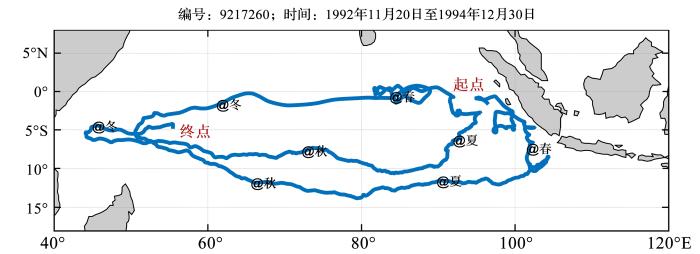
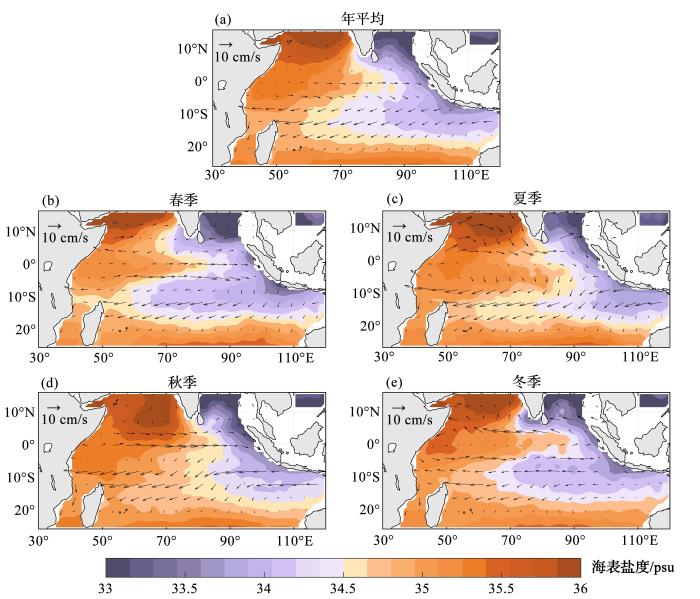
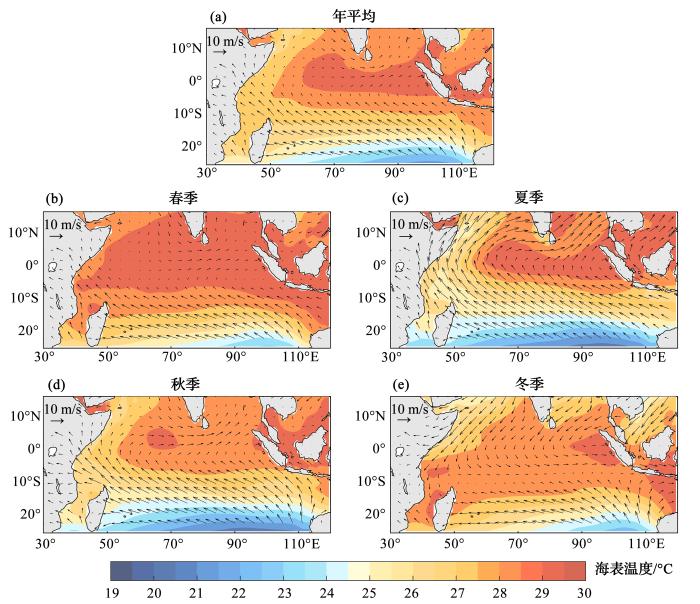

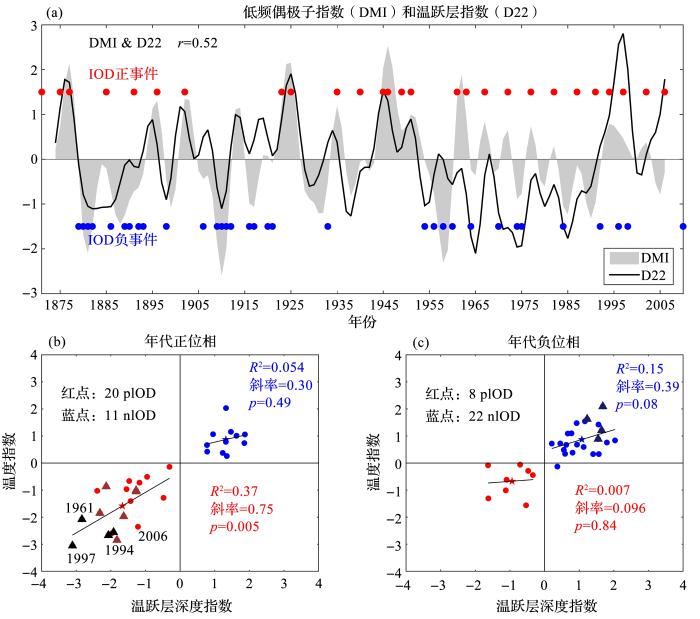
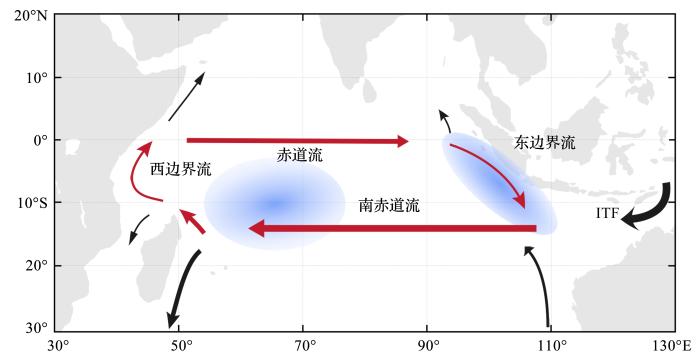


 甘公网安备62010202000687
甘公网安备62010202000687